Walk-in pantries have become a staple for modern kitchens, offering a perfect blend of functionality and style. From seamless door solutions and floor-to-ceiling shelving to decorative accents and dedicated workstations, these spaces can be transformed into highly organized, aesthetically pleasing extensions of your culinary domain. Drawing on expert advice and real-life examples from Better Homes & Gardens, The Spruce, Architectural Digest, Apartment Therapy, and ELLE Decor, the following 20 ideas will help you maximize storage, enhance accessibility, and infuse personality into your walk-in pantry. Whether you’re working with a compact closet or a roomy alcove, there’s inspiration here to suit every space.
1. Install Pocket Doors
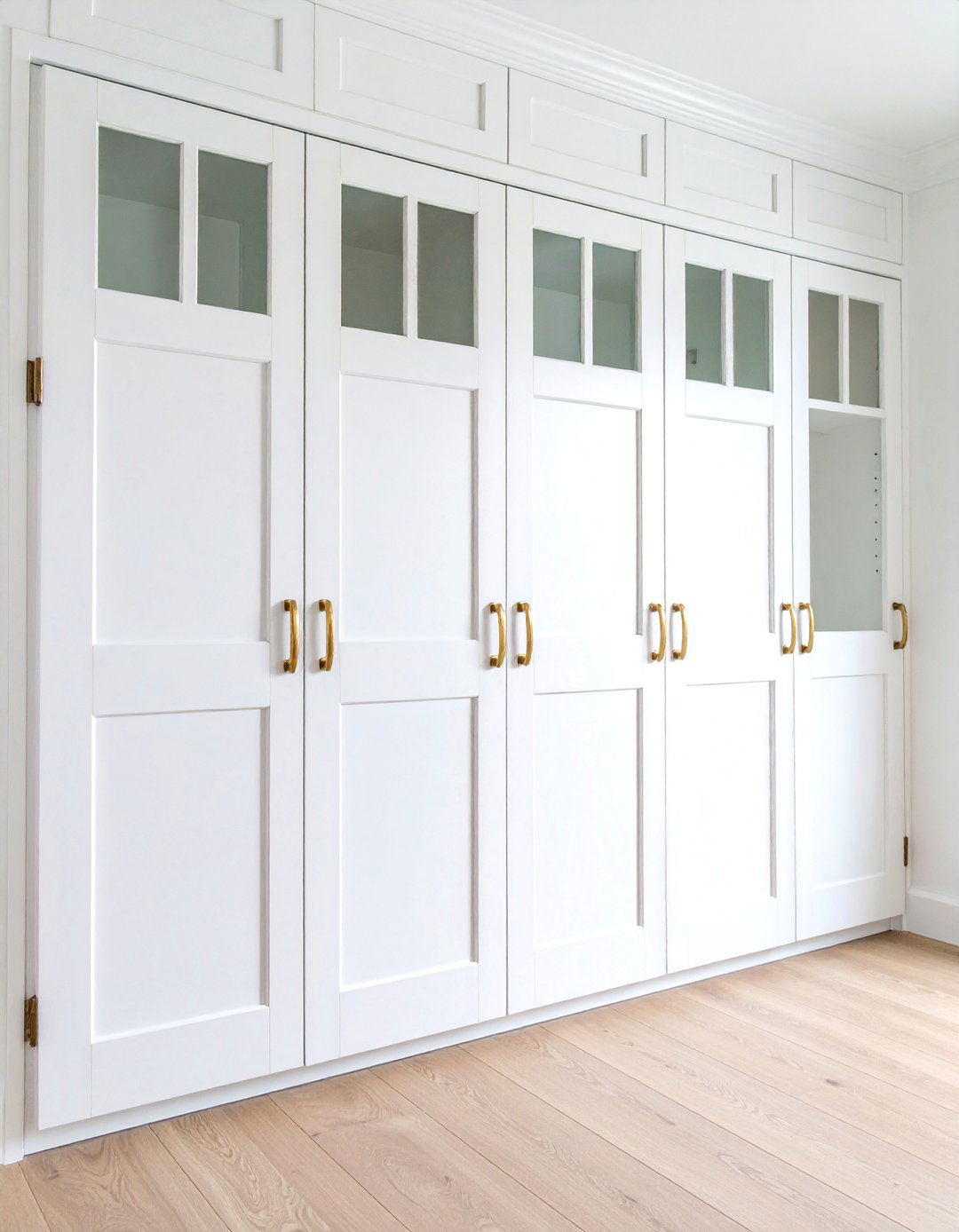
Pocket doors slide into the wall cavity, eliminating the swing radius needed for traditional doors and freeing up valuable floor space in your pantry area. They also offer an opportunity to add visual interest through customized paneling or bold paint colors, seamlessly blending with kitchen cabinetry when closed. This solution is especially beneficial in tight corridors or galley layouts, where every square inch counts, and can be installed during new construction or as a retrofit in existing homes, ensuring that pantry access is both practical and stylish.
2. Floor-to-Ceiling Pantry Shelves
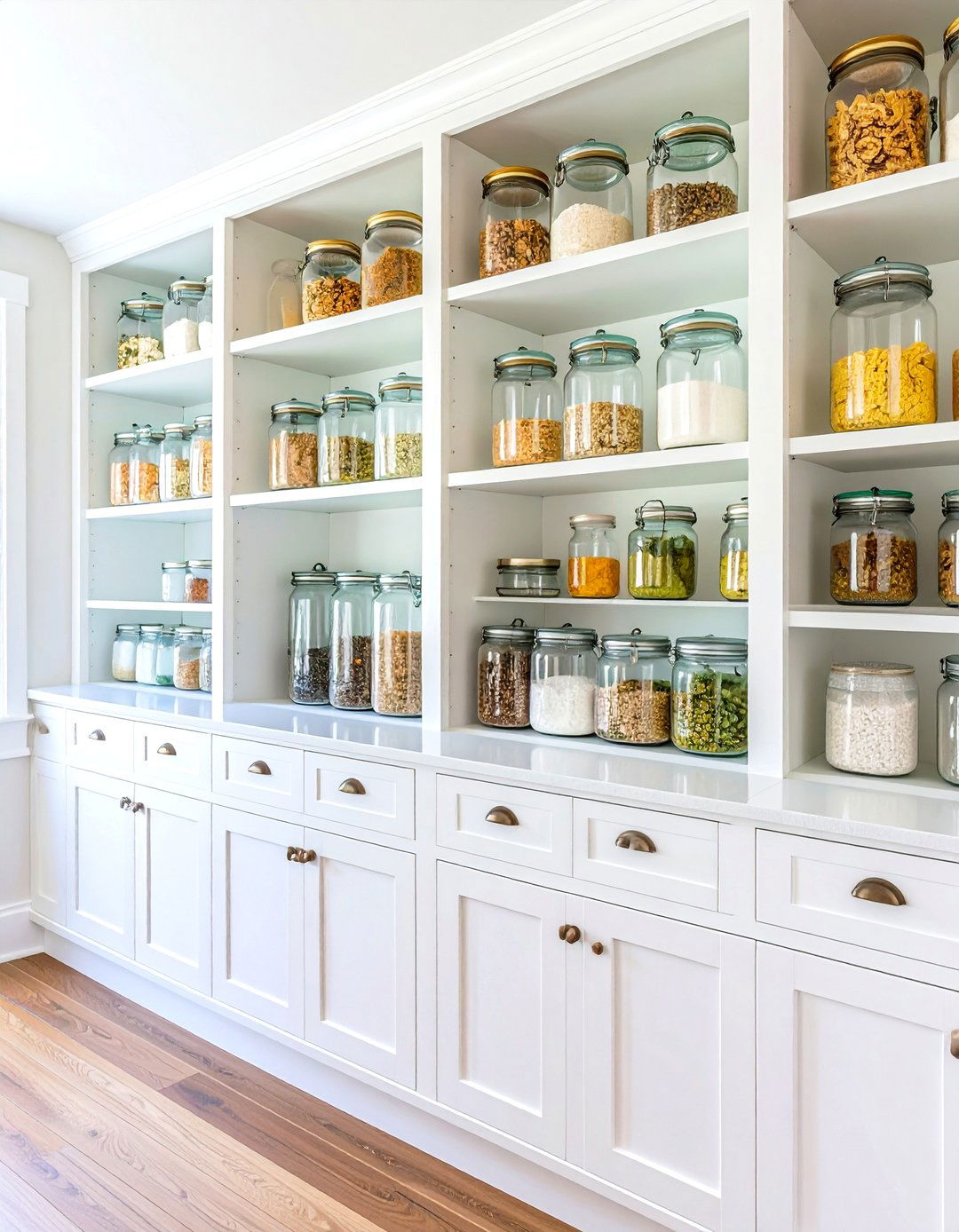
Extending shelving from floor to ceiling maximizes every available inch of storage, creating dedicated zones for bulkier items at the bottom, everyday essentials at eye level, and seasonal or decorative pieces up top. By incorporating elegant trim and paint contrasts—such as a rich hue against subway tile—you can elevate a basic storage solution into a design feature. This approach also encourages the use of a small step stool or rolling ladder for hard-to-reach spots, ensuring an efficient, clutter-free pantry that feels polished and purposeful.
3. Install Pantry Drawers
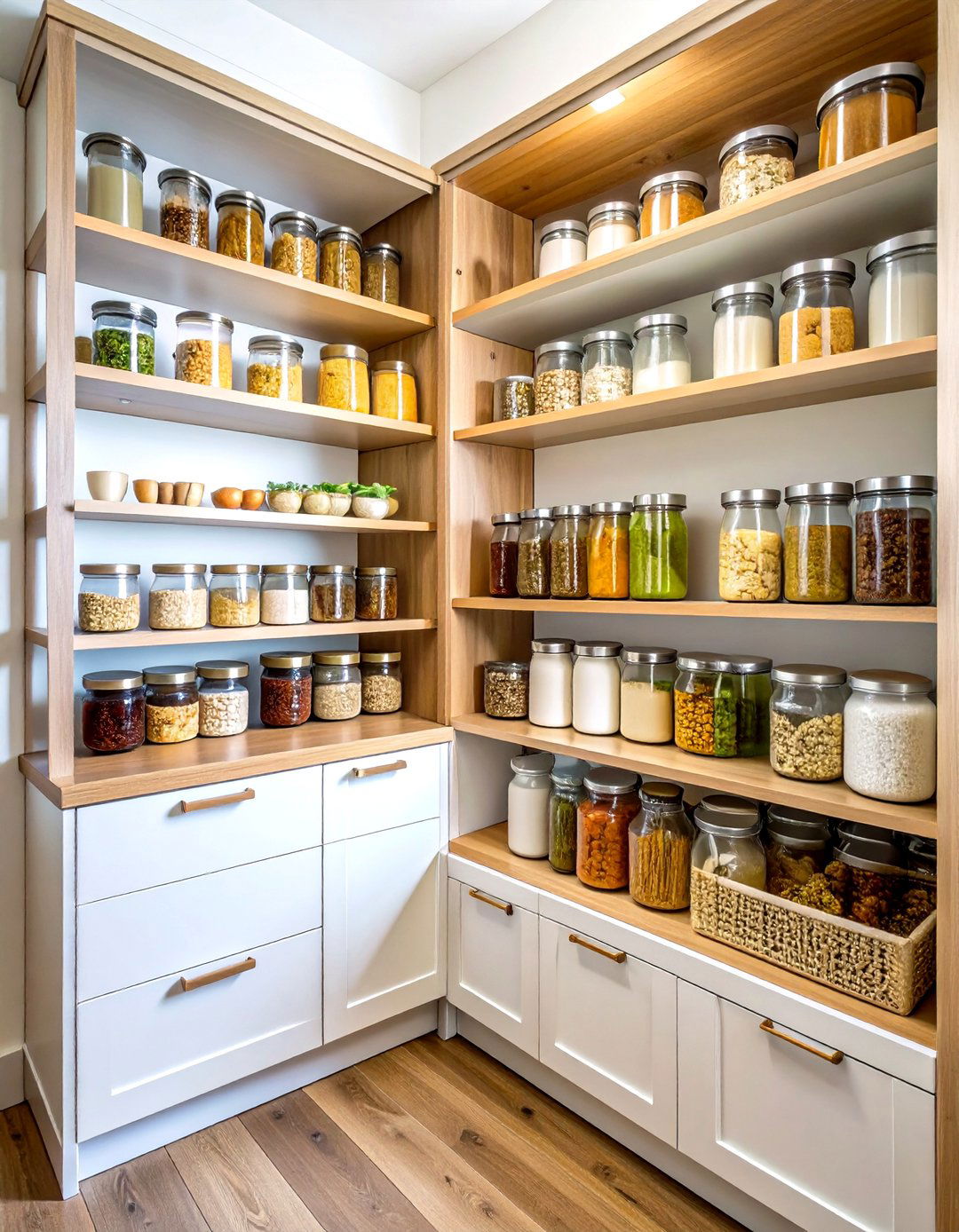
Deep cabinet shelves often hide smaller items like cans and jars, leading to forgotten food and wasted space. Pull-out pantry drawers solve this by allowing you to extend the entire shelf forward, providing clear visibility and easy access to items at the back. Whether integrated under existing shelves or replacing entire sections, these drawers reduce food waste, simplify inventory management, and impart a streamlined, modern look to your pantry that keeps everything neatly contained and within reach.
4. Use Glass Food Storage Jars
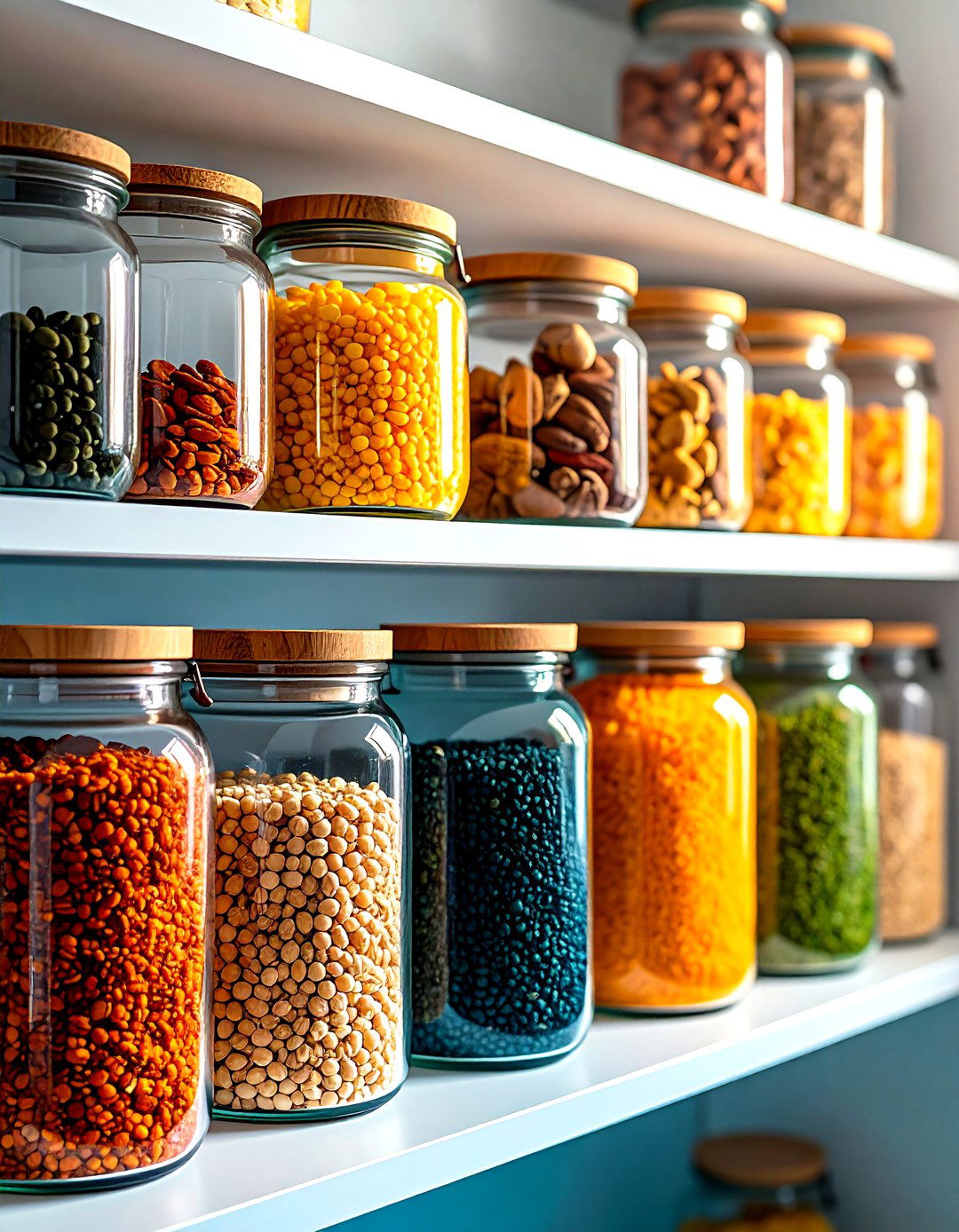
Swapping bulky cardboard boxes for uniform glass storage containers not only saves space but also creates a cohesive, magazine-worthy display. Clear jars allow you to see contents at a glance, making meal prep and restocking faster and more intuitive. Choose stackable or canister-style jars with airtight seals to preserve freshness, and label each with chalkboard or printed tags for a personalized touch. This tactic turns everyday pantry staples into decorative accents, combining practicality with an elegant aesthetic that enhances both form and function.
5. Maximize Access With a Ladder
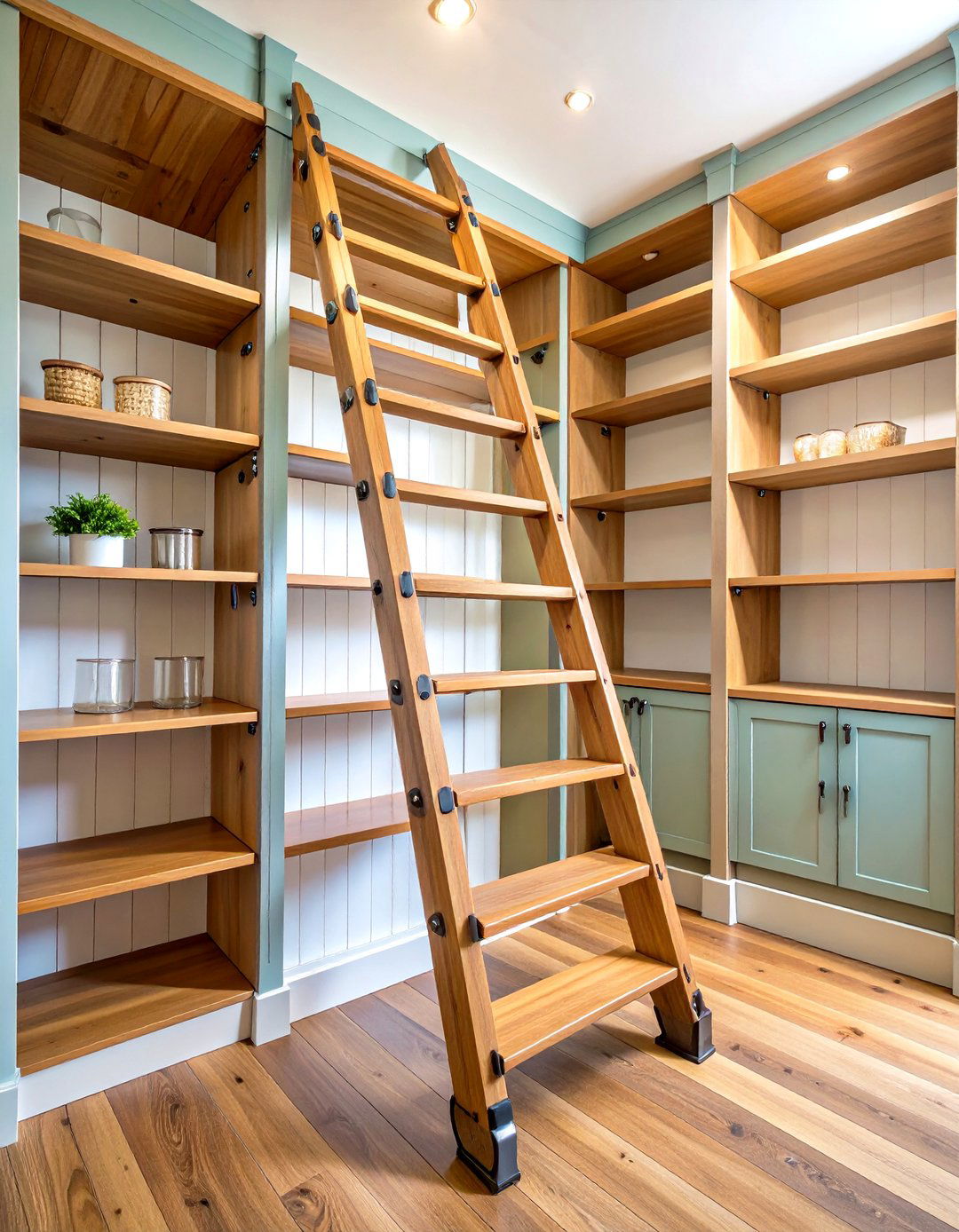
For pantries with high ceilings or lofted shelving, a rolling ladder provides safe and stylish access to items stored out of arm’s reach. Mounted on a rail, the ladder glides smoothly along the length of your pantry, offering a nod to library-inspired design while serving a crucial functional role. Opt for wood or metal finishes that complement your cabinetry, and consider built-in hooks for hanging aprons or towels. A ladder not only solves practical challenges but also adds architectural interest to the pantry entryway.
6. Mix Multiple Types of Storage
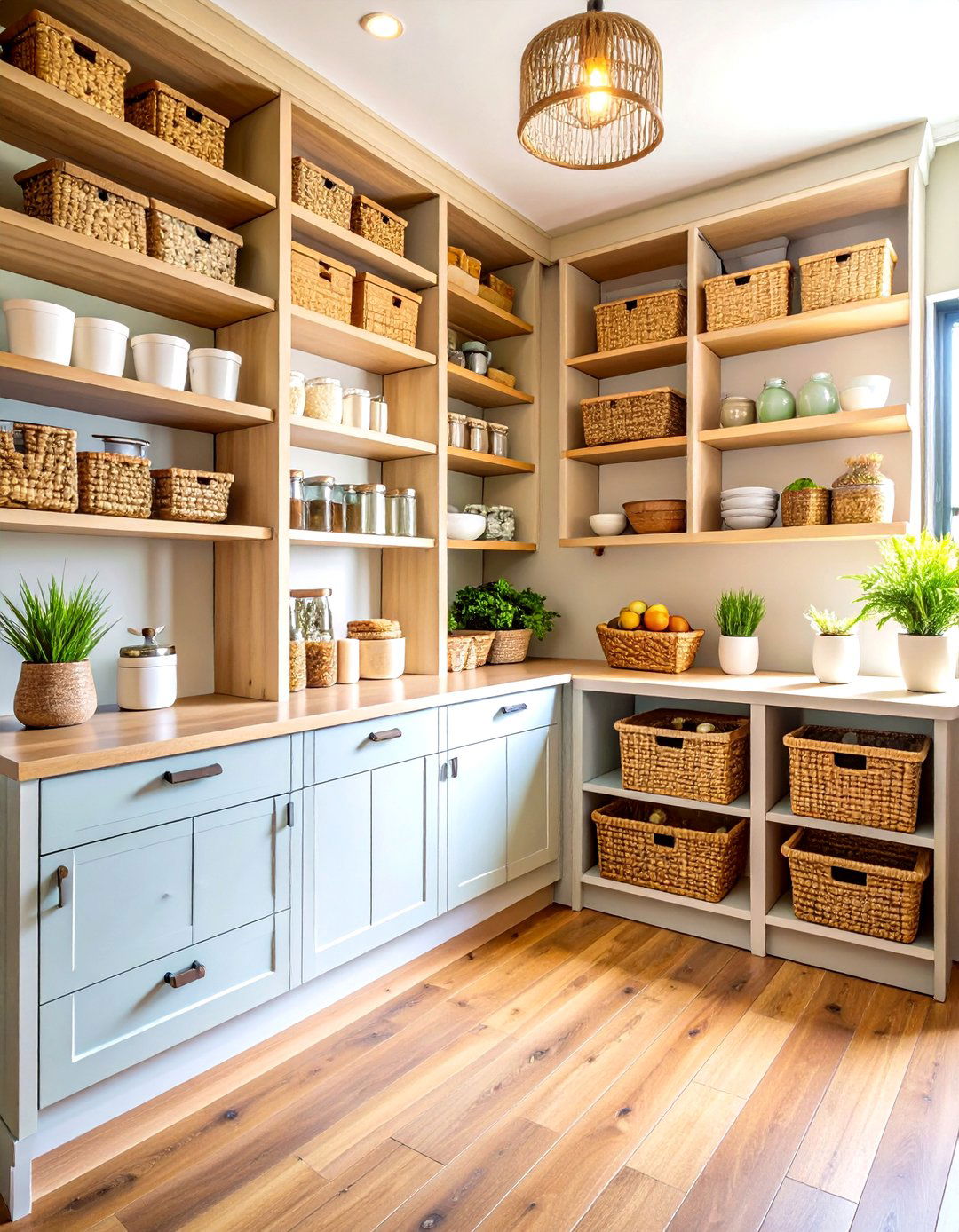
Versatility is key when organizing a pantry—combine floating shelves, lower cabinets with open fronts, drawers, baskets, and countertop space to accommodate everything from baking supplies to produce and small appliances. By grouping like items and allocating zones—such as a baking station, snack corner, and breakfast prep area—you can tailor the layout to daily routines. Integrating baskets and bins keeps smaller items from spilling, while open cabinetry ensures a visually appealing, curated display. This eclectic approach balances convenience with aesthetic coherence.
7. Incorporate Slide-Out Pantry Drawers
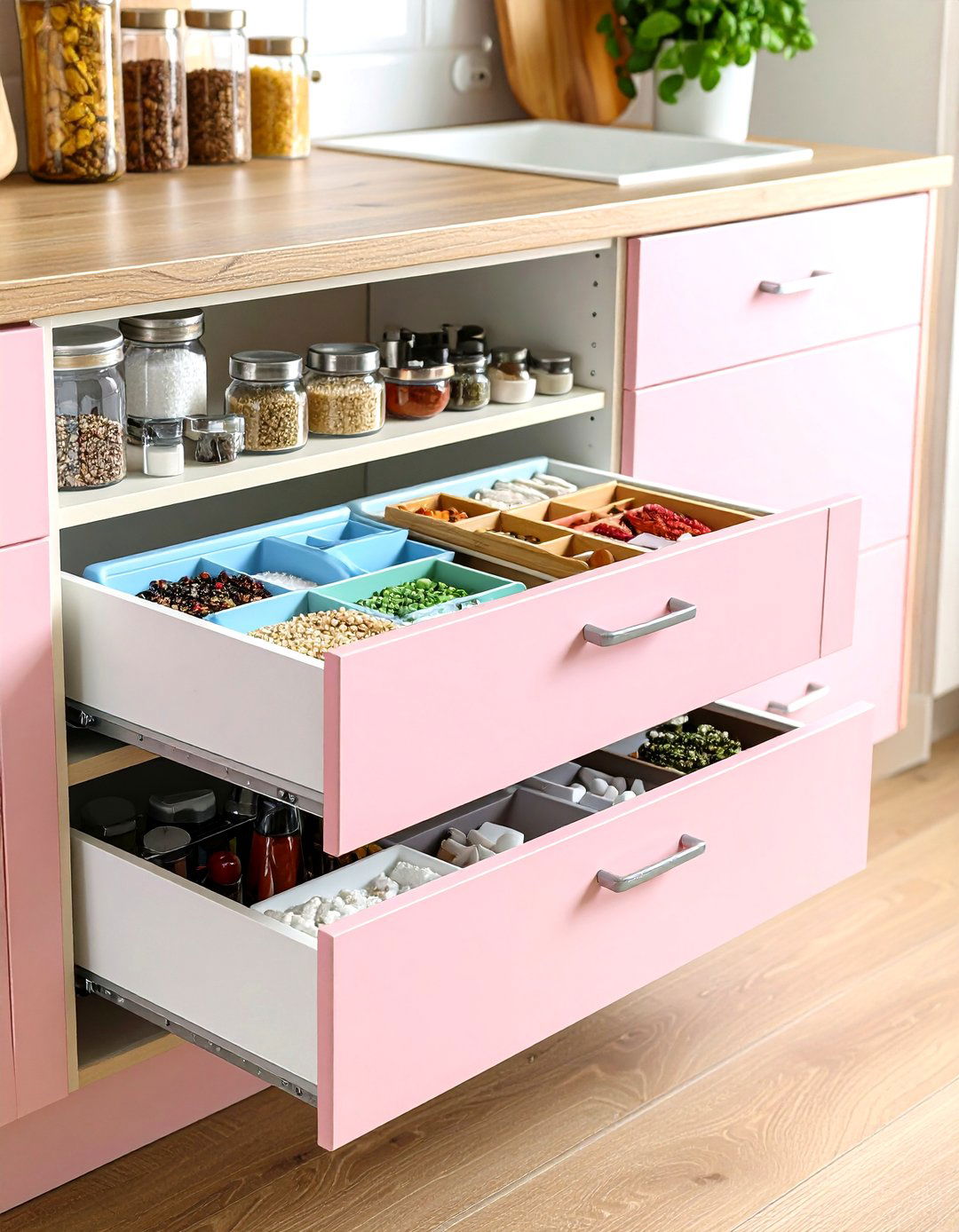
Slide-out drawers are a game-changer for standard kitchen cabinets, transforming deep, hidden shelves into fully extendable storage. Perfect for organizing spices, oils, and other smaller items, these drawers roll out smoothly and return flush with cabinet faces, maintaining a clean, uncluttered look. Adjustable dividers within the drawers allow for customization, separating categories like grains, canned goods, or baking essentials. This low-profile upgrade enhances accessibility without sacrificing style.
8. Paint a Chalkboard Wall
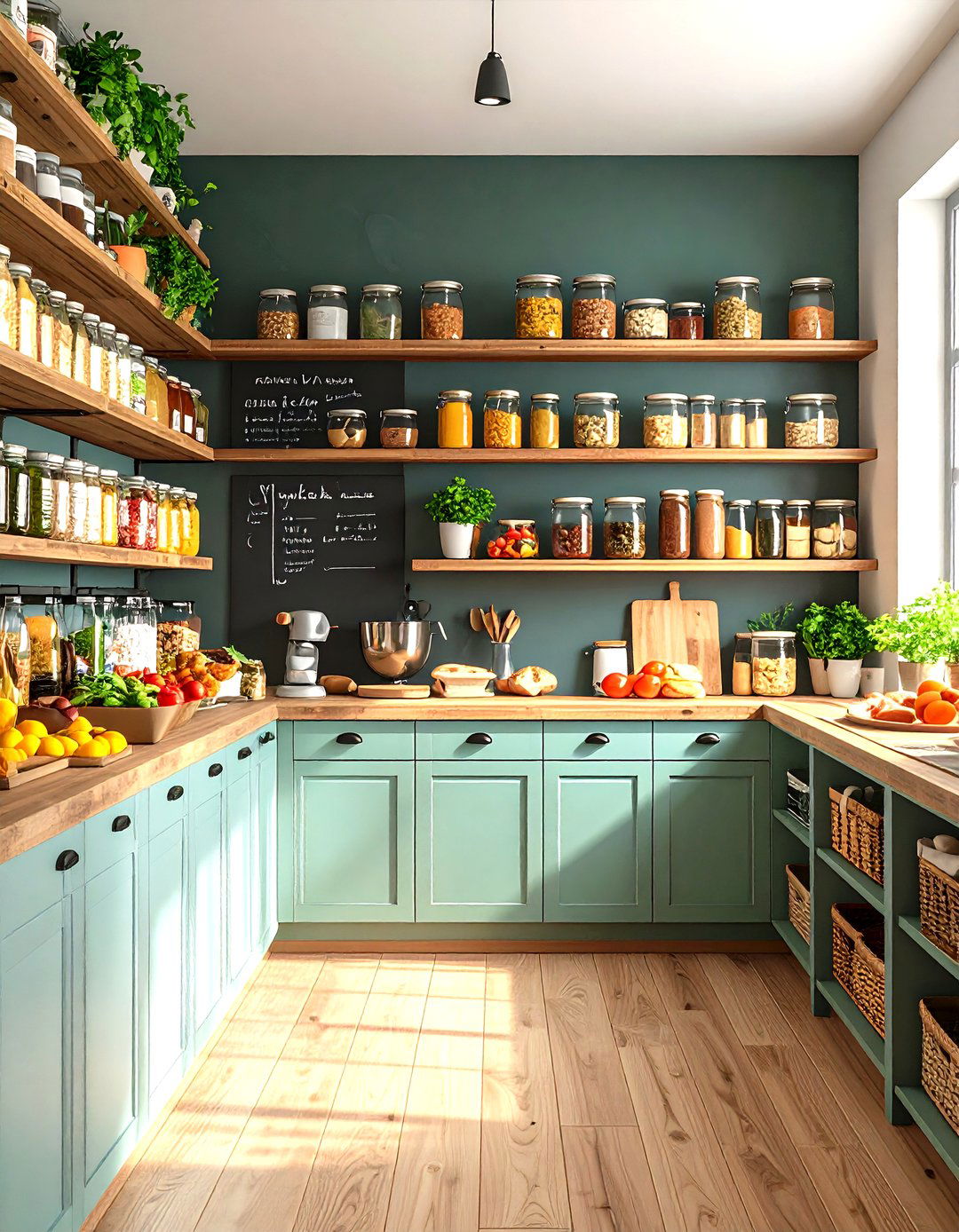
Adding a chalkboard-painted surface inside the pantry—or on the back of its door—creates a dynamic space for grocery lists, menu planning, and inspirational quotes. Chalkboard walls lend a playful, interactive element to the pantry, encouraging family members to jot down items as they run low. Pair with a sleek chalk pen and coordinating magnetized chalkboard accessories to keep the board clean and legible. This creative touch personalizes the pantry and serves a truly functional purpose for busy households.
9. Mount Floating Shelves
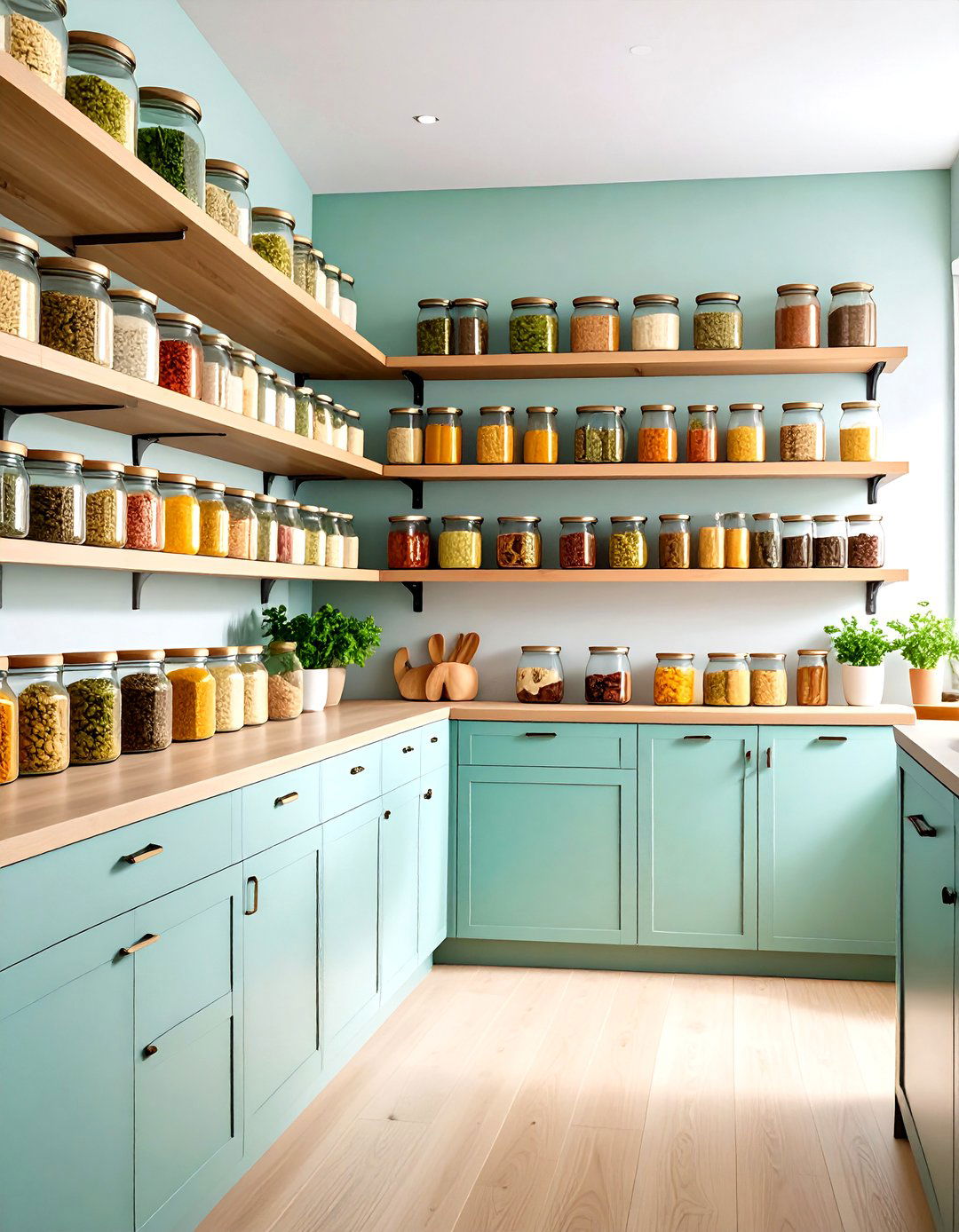
Floating shelves are an elegant, minimalist alternative to bulkier cabinetry. Install narrow, staggered shelves on pantry walls to display glass jars, spice bottles, or small decorative pieces. Label each shelf so that items are organized by category—grains, legumes, snacks—and ensure consistent spacing for a balanced arrangement. Floating shelves also allow light to pass freely, keeping the pantry airy and open. Select durable materials like solid wood or laminate with sturdy brackets to support heavier loads.
10. Hang a Shelf On the Pantry Door
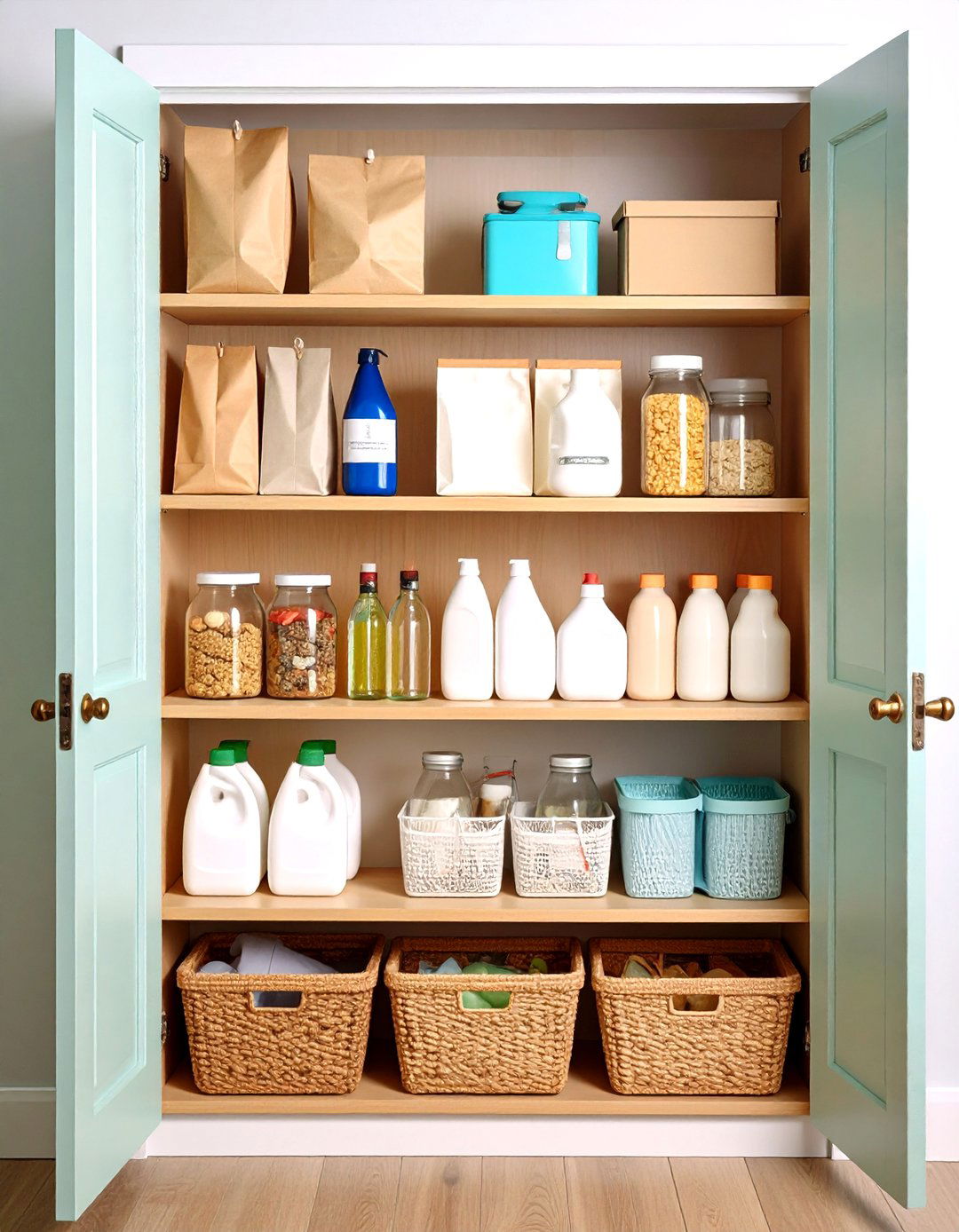
Optimize every inch by attaching a lightweight floating shelf or wire rack to the pantry door’s interior. Perfect for non-breakable, lightweight items such as paper goods, trash bags, or cleaning supplies, this solution keeps essentials out of the way yet readily accessible. Ensure the door’s hinges and frame can support the added weight, and choose slim-profile shelving to prevent interference with door closure. A door-mounted shelf is an easy DIY upgrade that maximizes often-overlooked real estate.
11. Leave Room to Breathe
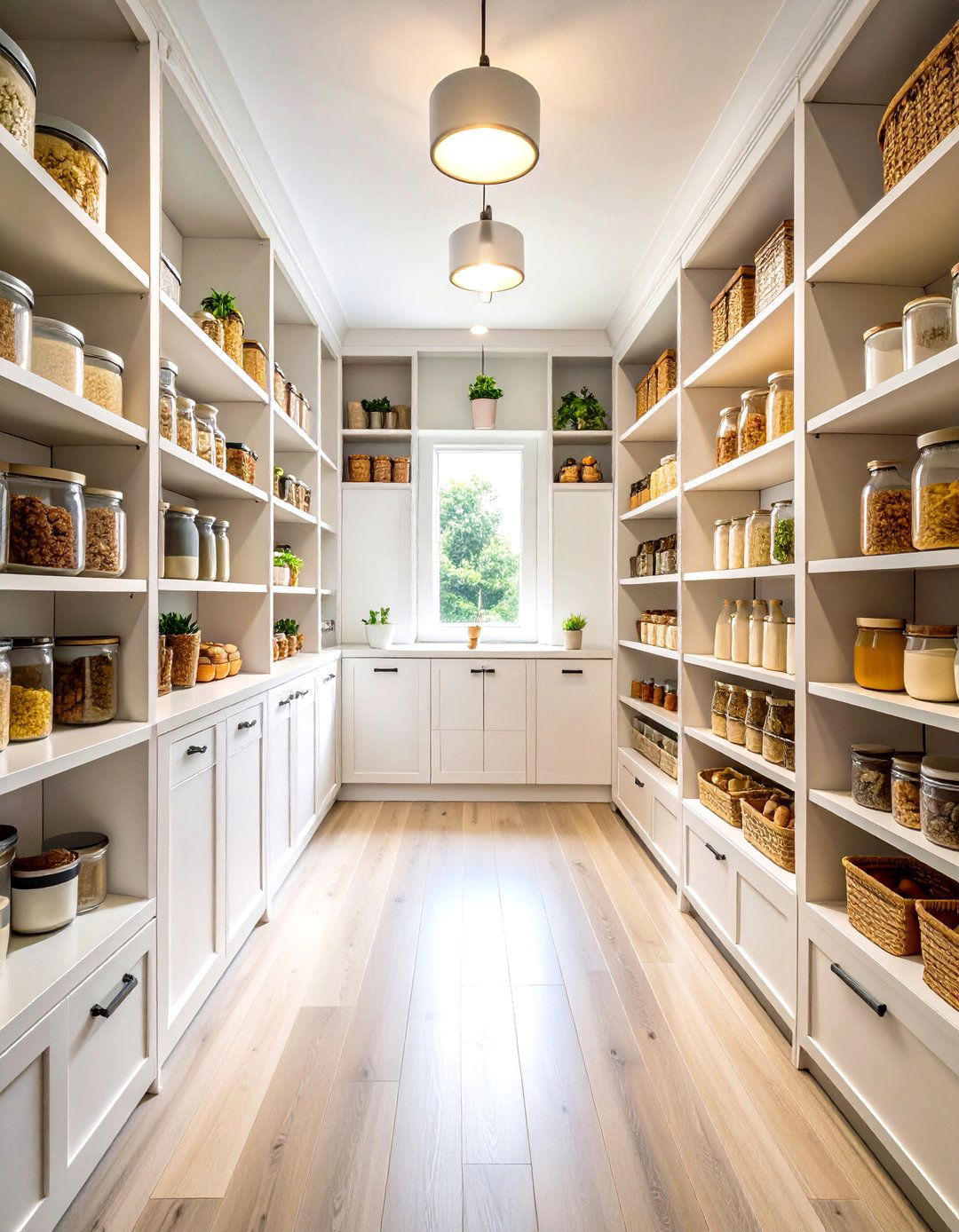
Overpacking your pantry can make it feel cramped and overwhelming. Designate at least one or two open zones without shelving or storage containers to create visual breathing room and prevent the space from feeling claustrophobic. This intentional emptiness enhances the perception of depth, makes cleaning simpler, and allows for quick inventory scans. Periodically review pantry contents to eliminate expired or unused items, ensuring that the “room to breathe” stays uncluttered and inviting.
12. Embrace a Simple Aesthetic
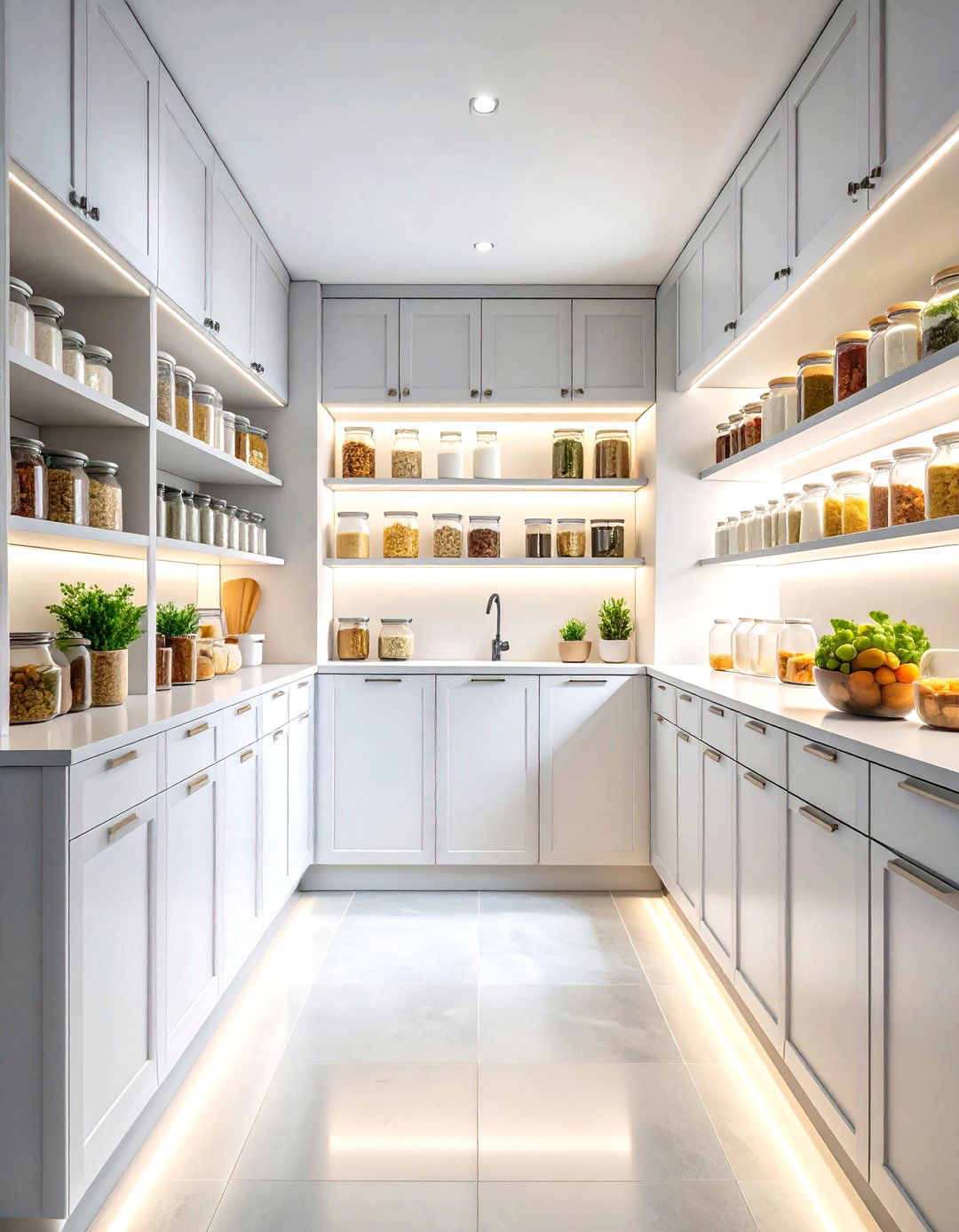
A minimalist approach—using a neutral palette of whites or soft grays—can make even a small pantry feel spacious and serene. Opt for unadorned cabinetry, clear containers, and a restraint in decorative elements to highlight functionality. Subtle hardware and concealed lighting, such as LED strips under shelves or integrated puck lights, maintain a clean, contemporary look. A simple aesthetic emphasizes organization and allows pantry contents to stand out, fostering a calm, orderly environment.
13. Integrate Appliance Outlets
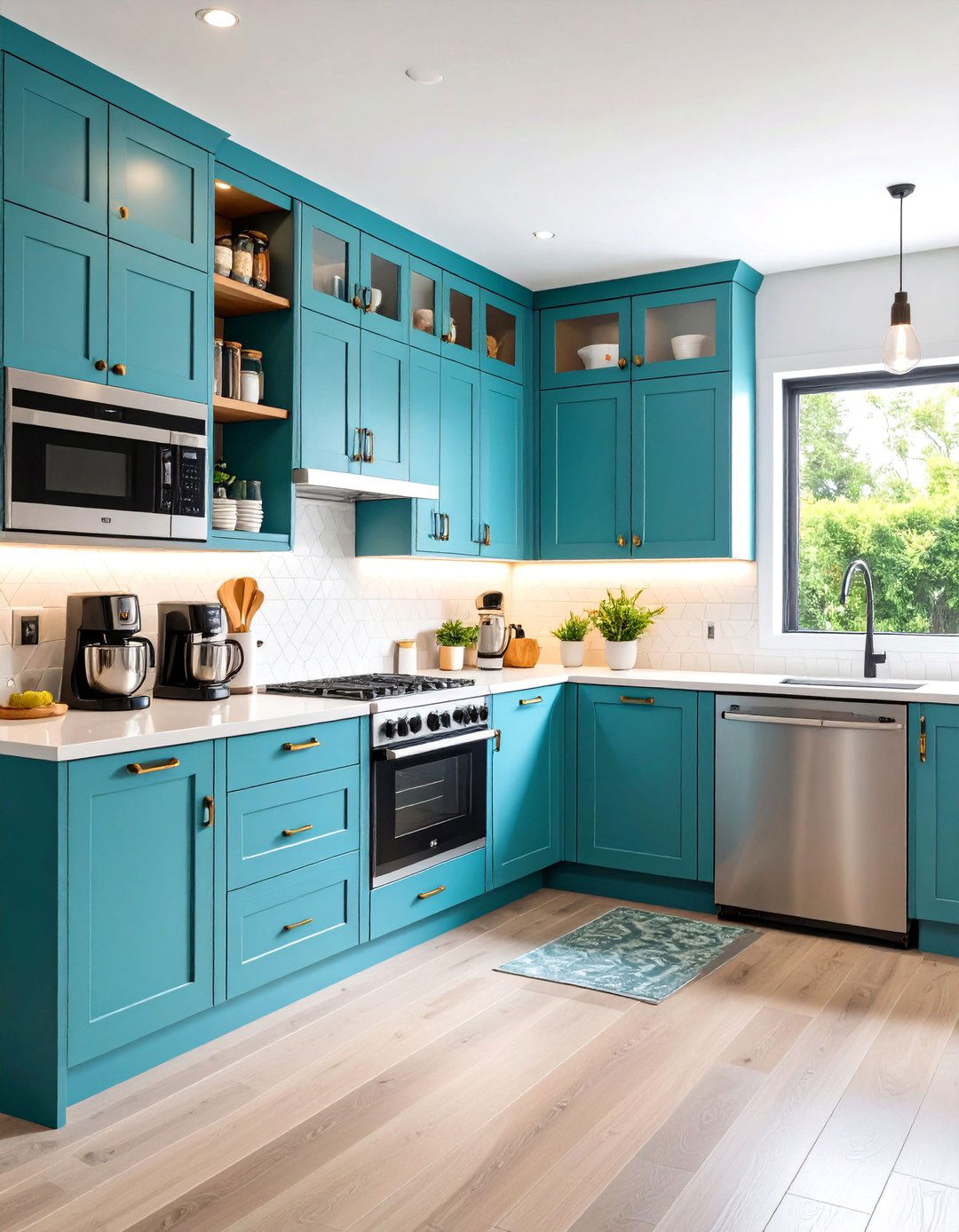
Incorporating dedicated outlets within the pantry walls transforms it into a multifunctional space, capable of housing small appliances like coffee makers, mixers, or slow cookers. Plan outlet placement at countertop height and consider adding USB ports for charging devices. This setup keeps bulky appliances out of the main kitchen, reducing countertop clutter and creating a specialized beverage or prep station. Consult an electrician to ensure code compliance and to install outlets with protective covers for moisture-prone areas.
14. Maximize Vertical Storage with Risers and Stackable Containers
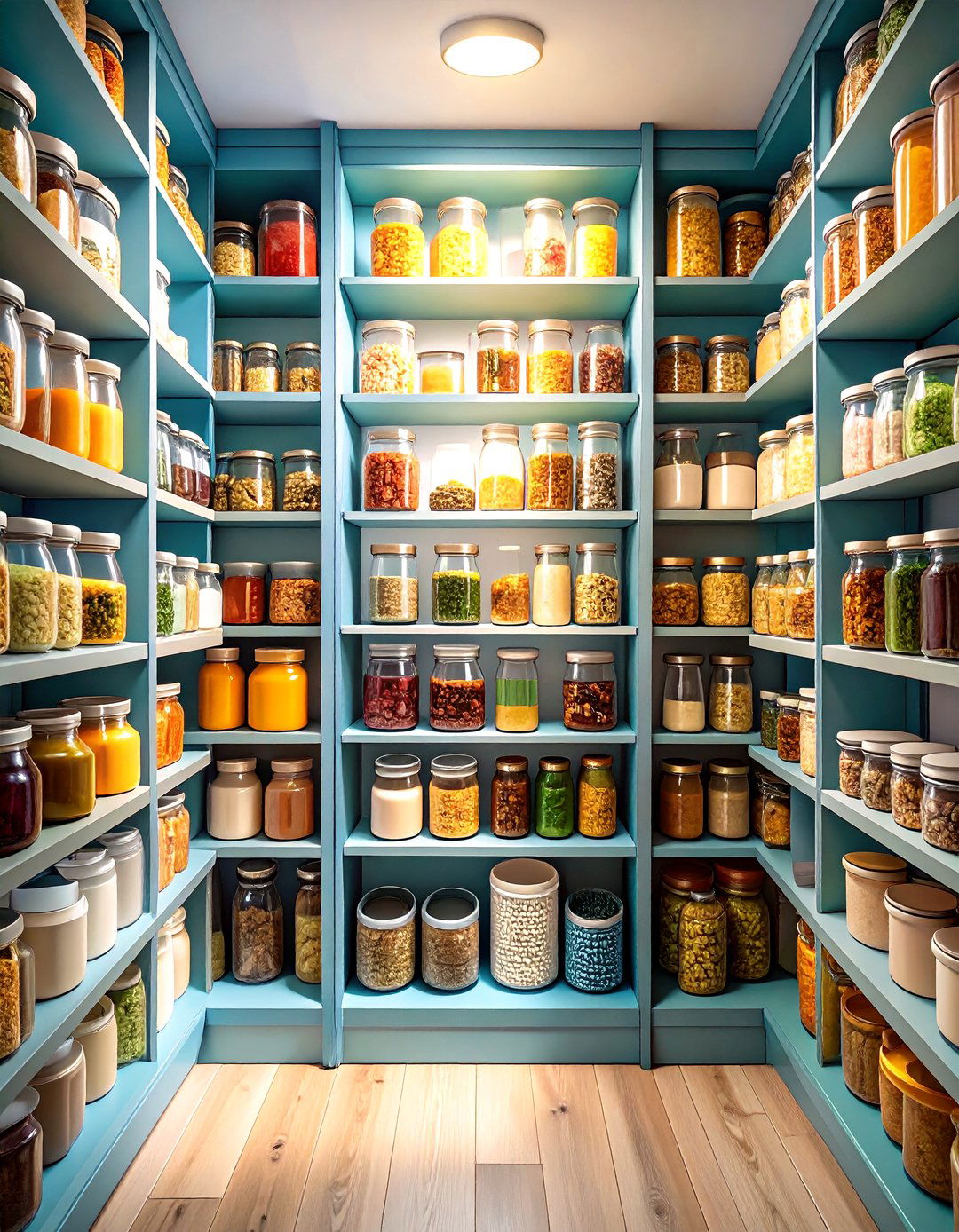
Interior designers recommend using risers to elevate shorter items, creating a tiered display that maximizes visibility and accessibility. Stackable containers, particularly clear acrylic or glass, add uniformity and allow for easy categorization. Place condiments, spices, or canned goods on stacked risers so you can see labels without moving items in front. This layered technique unlocks every inch of vertical space, making even narrow pantries highly efficient and organized.
15. Add Antique Mirror Tiles for Visual Interest
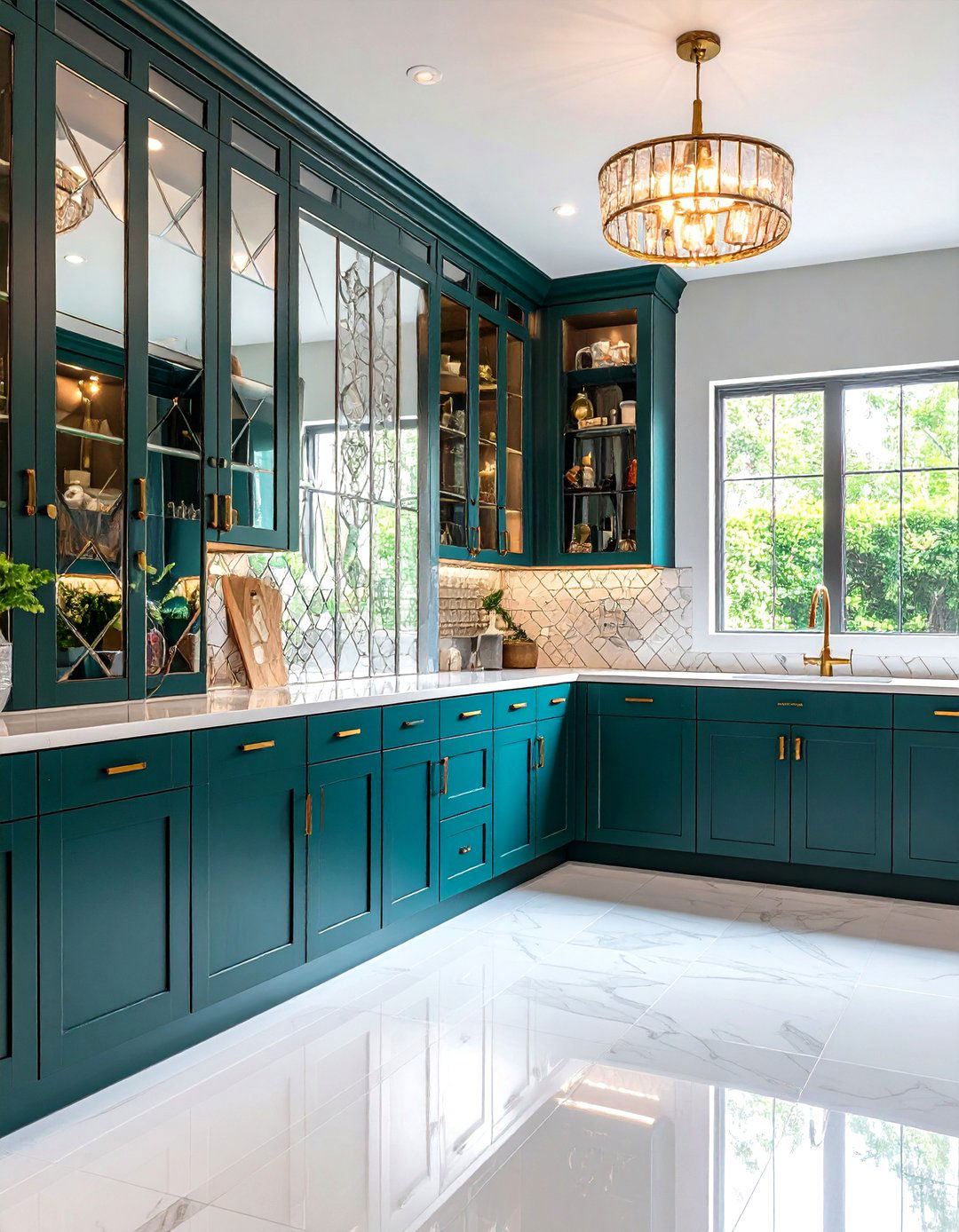
Incorporating antique mirror tiles on one pantry wall reflects light and lends a touch of old-world glamour to the space. The mirrored surface enhances the perception of depth, making narrow or windowless pantries feel larger. Pair with dark cabinetry or moody paint to create contrast, or keep the surrounding palette light for a more subtle effect. Antique mirrors bring character, allowing your pantry to double as a stylish vignette when the door is open.
16. Choose Stylish Pantry Door Designs
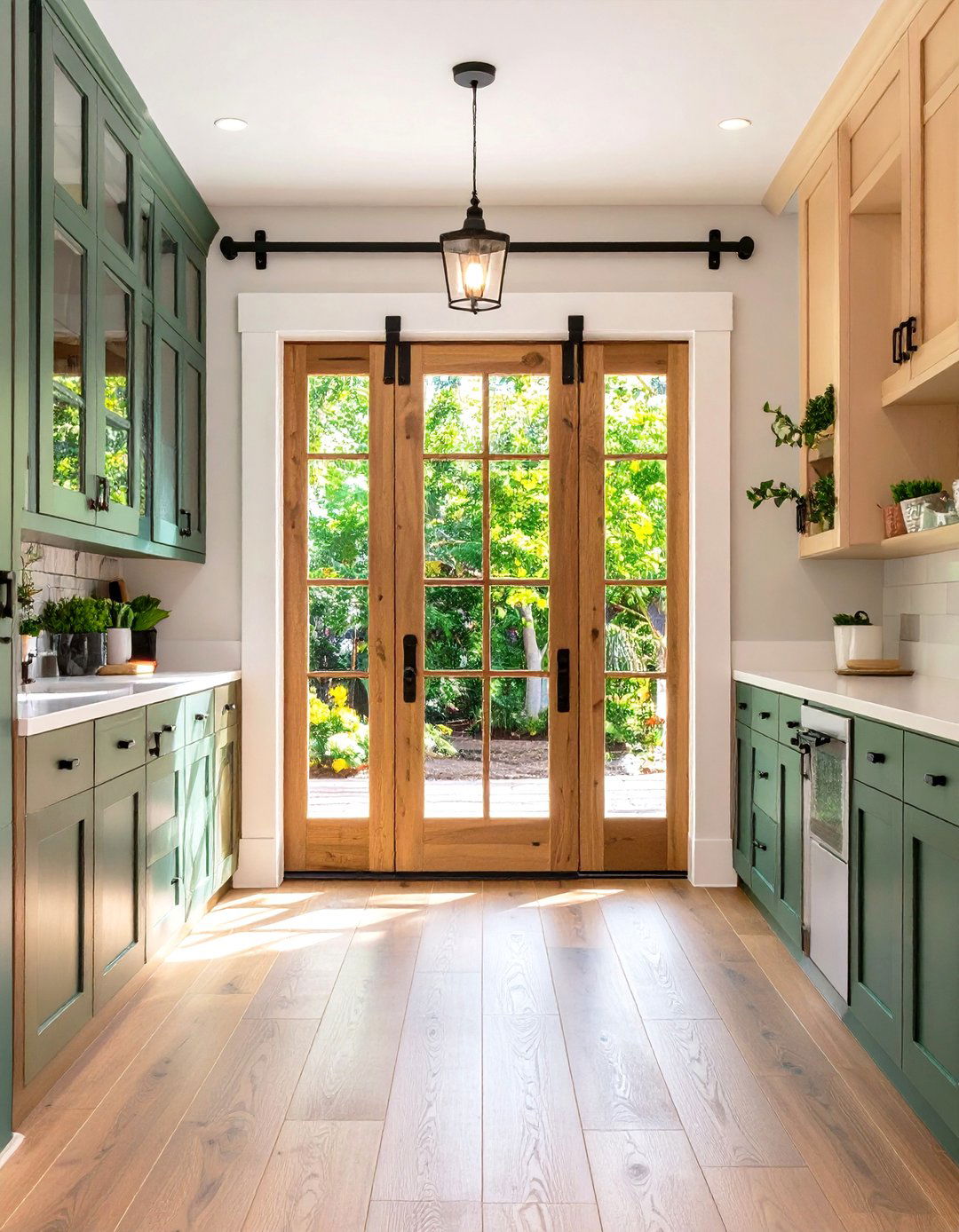
Your pantry door can be a focal point—opt for sliding barn doors with exposed hardware, glass-front French doors that showcase neatly arranged contents, or paneled doors with corkboard and chalkboard inserts for functionality. Each style offers a different aesthetic, from rustic farmhouse charm to sleek modern elegance. Glass doors blur the line between pantry and kitchen, while barn doors save space. Select a door design that complements your overall decor and sets the tone for the organized treasures within.
17. Utilize Open Pantry Shelving
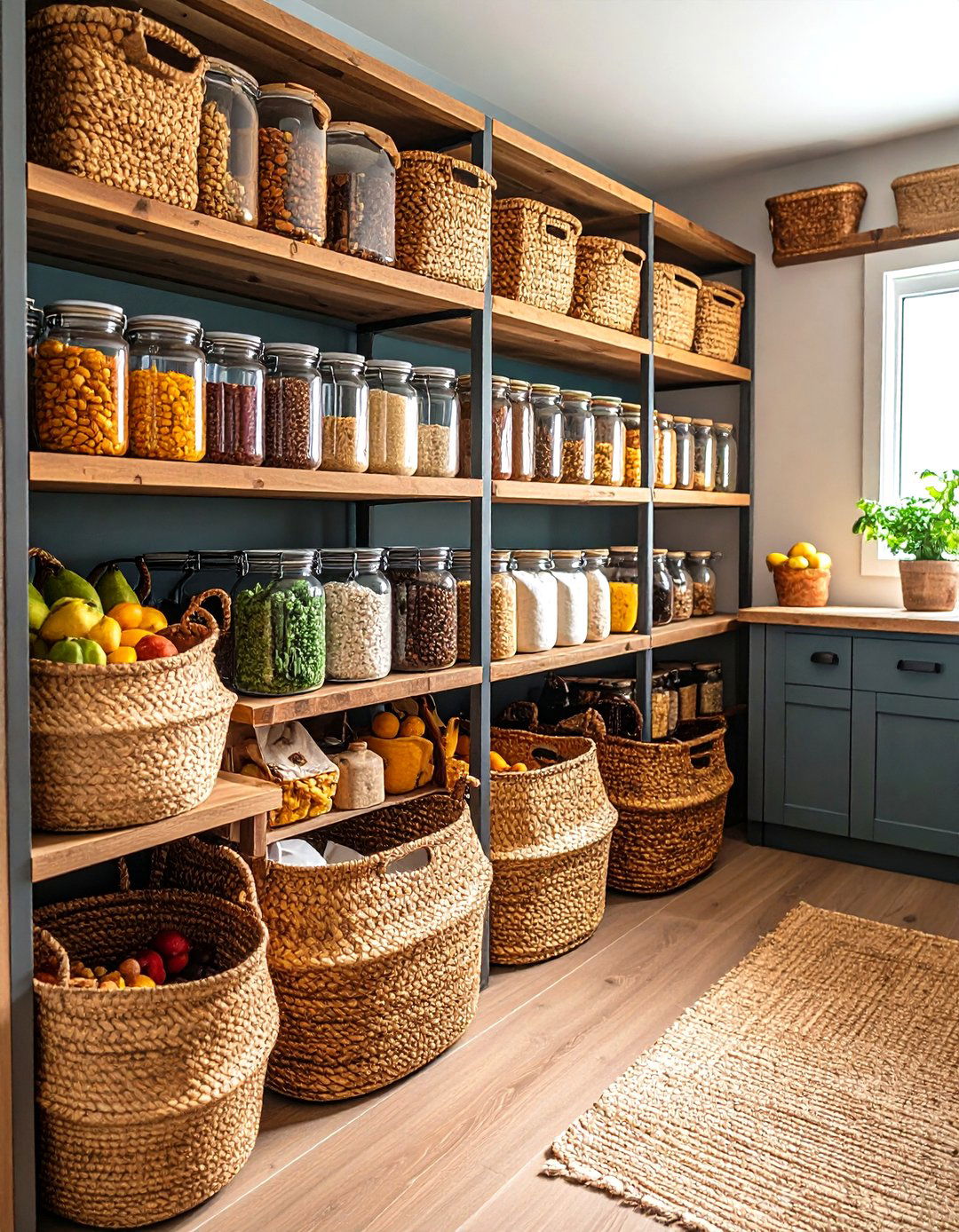
Open shelving creates an accessible, gallery-like display for everyday items. By grouping like items—such as white dishware, glass containers of dry goods, or woven baskets for snacks—you achieve both visual cohesion and practical organization. Ensure that heavier or less attractive items are hidden behind cabinet doors or stored in lower drawers. Open shelving encourages you to maintain neatness since everything is on display, fostering a habit of quick cleanups and thoughtful restocking.
18. Incorporate Baskets for Organization
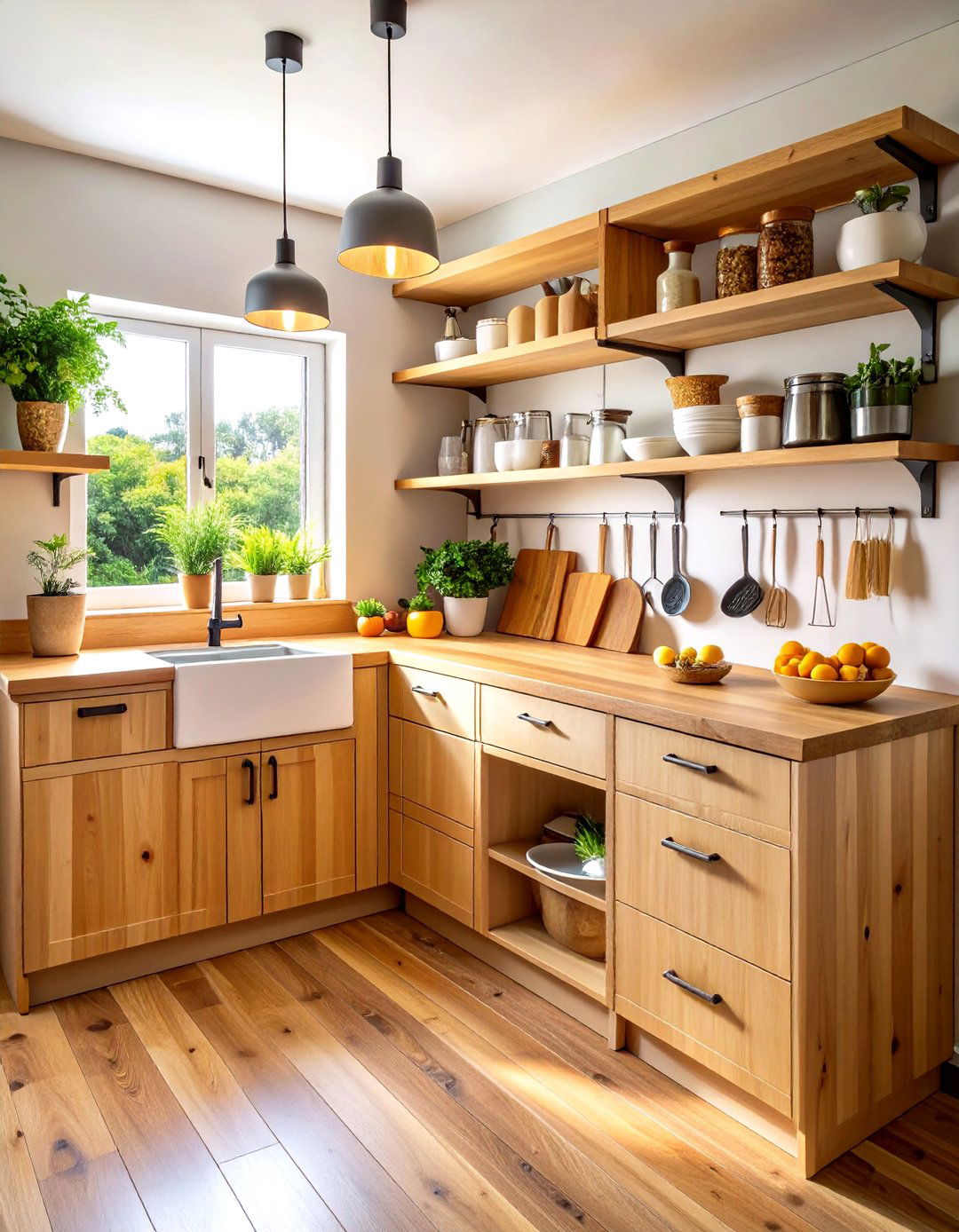
Woven baskets or fabric bins are perfect for corraling loose items like individually wrapped snacks, bread loaves, or produce. Label each basket clearly and position them within easy reach. Baskets also soften the visual look of metal or wood shelving, adding warmth and texture. Choose sizes that fit shelf depths to prevent wasted space, and stack smaller baskets inside larger ones when not in use to keep clutter at bay.
19. Add a Countertop Workspace
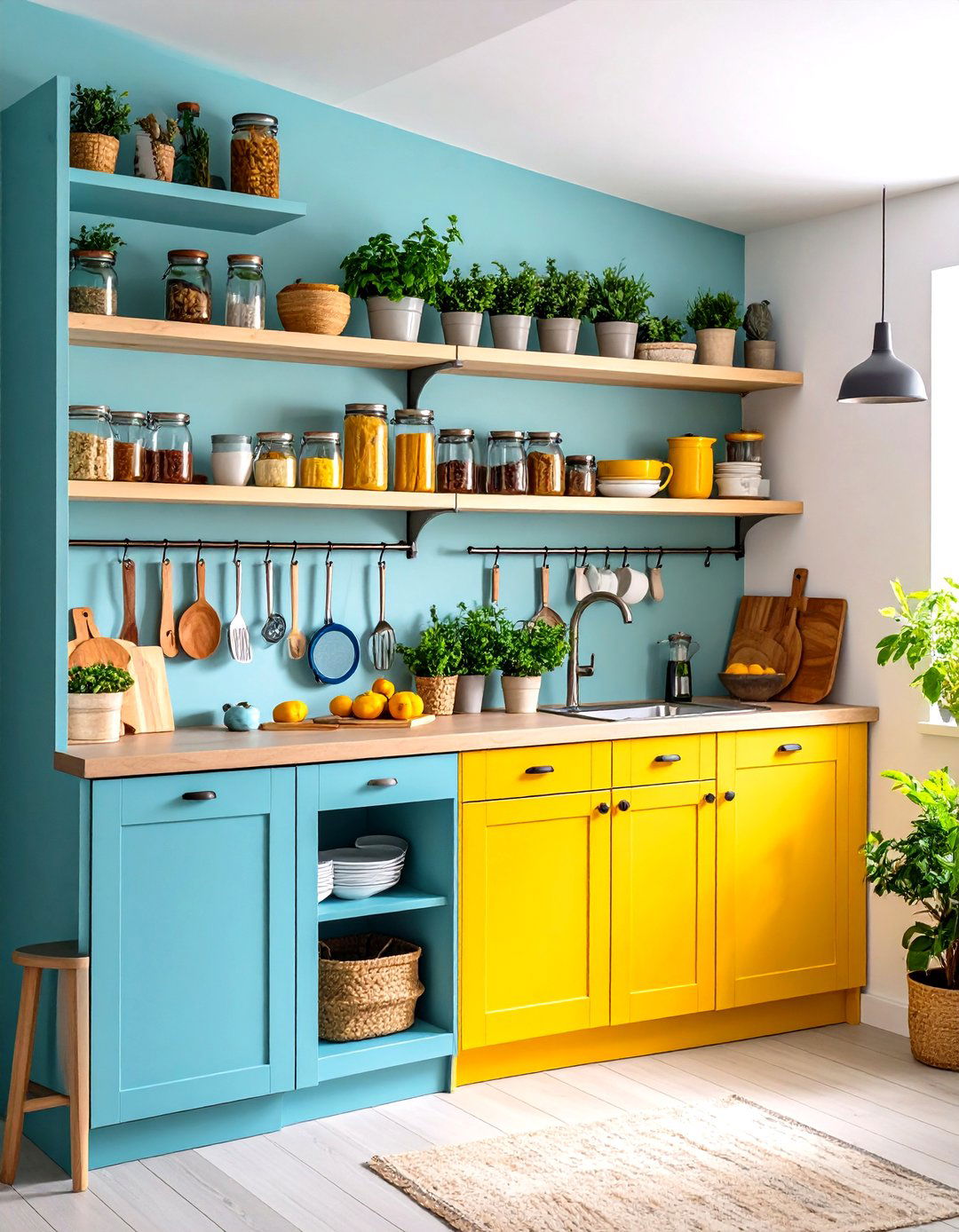
Installing a small countertop—whether butcher block, quartz, or laminate—within the pantry provides a dedicated area for meal prep, staging grocery items, or setting out dishes during entertaining. Include under-counter drawers or cabinets for utensils, cutting boards, and cooking tools. A pantry workspace keeps cooking flotsam out of the main kitchen area, streamlining cleanup and making the pantry a true extension of your culinary routine.
20. Repurpose an Unused Space
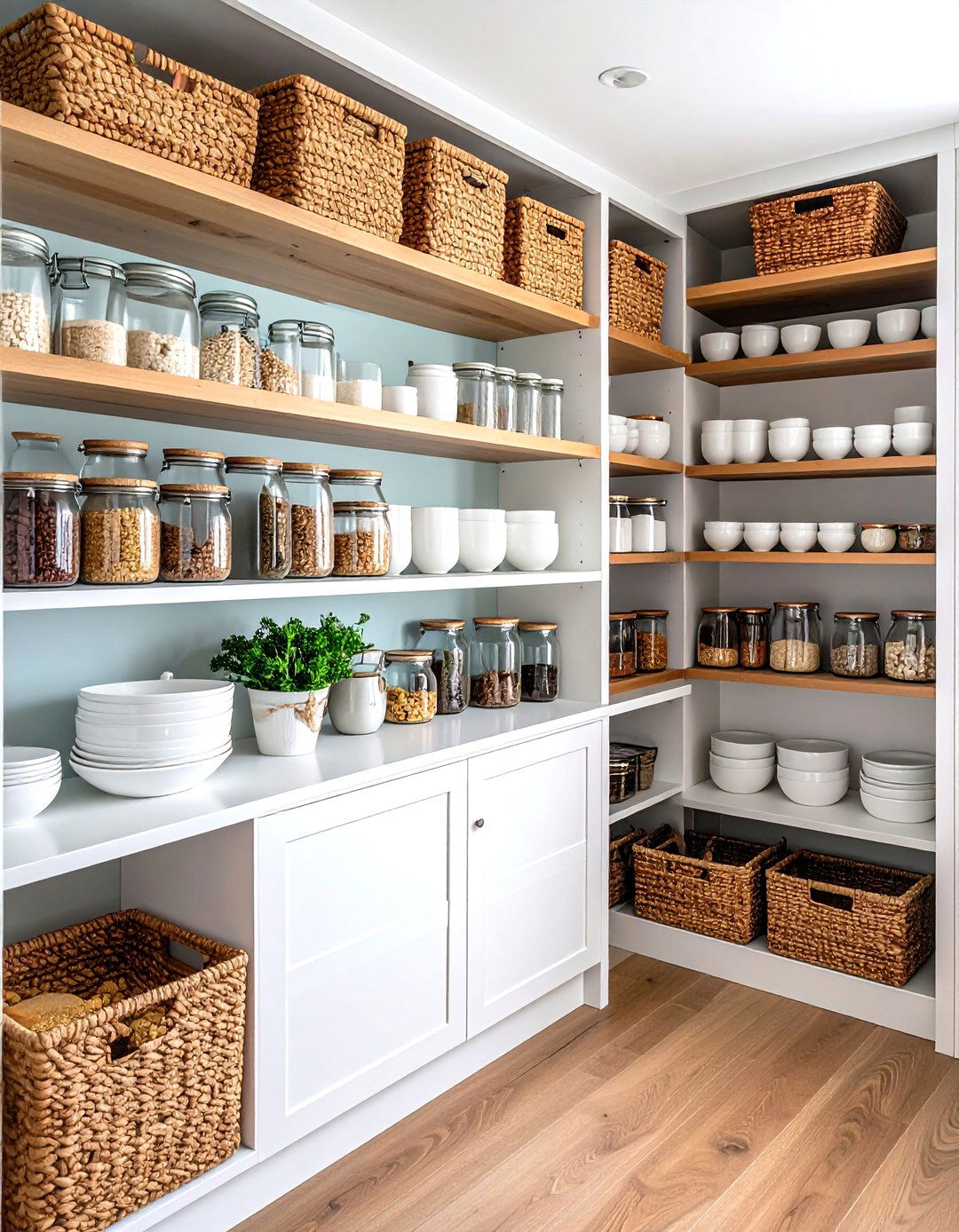
If a formal pantry room isn’t an option, convert an overlooked nook—such as a section of hallway, mudroom closet, or under-stair alcove—into a custom pantry. Install adjustable shelving, hooks for utensils, and a small countertop or drawer for additional storage. Repurposing unconventional spaces adds functional value to your home and leverages every possible square foot, turning previously wasted areas into practical, stylish storage solutions.
Conclusion:
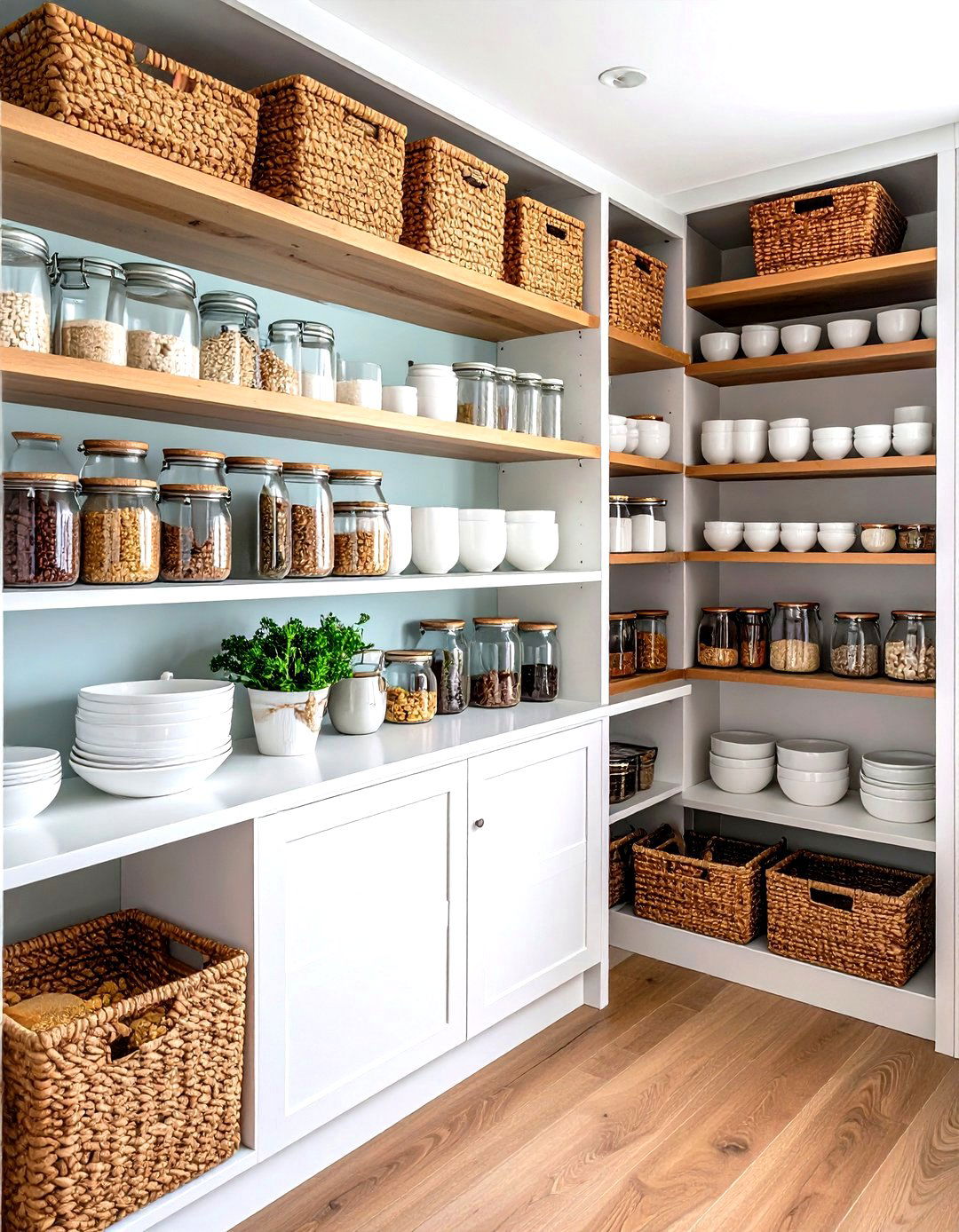
Transforming a walk-in pantry into a functional and stylish haven involves thoughtful layout, creative storage solutions, and bespoke design touches. From the smart use of pocket doors and slide-out drawers to decorative elements like chalkboard walls and antique mirror tiles, each idea enhances organization while reflecting personal taste. Integrating a countertop workspace, appliance outlets, or repurposed nooks elevates everyday routines, making meal prep and entertaining more efficient. By combining expert-recommended strategies—such as risers, glass jars, baskets, and open shelving—you can create a pantry that is both a practical powerhouse and a standout design feature in your home.


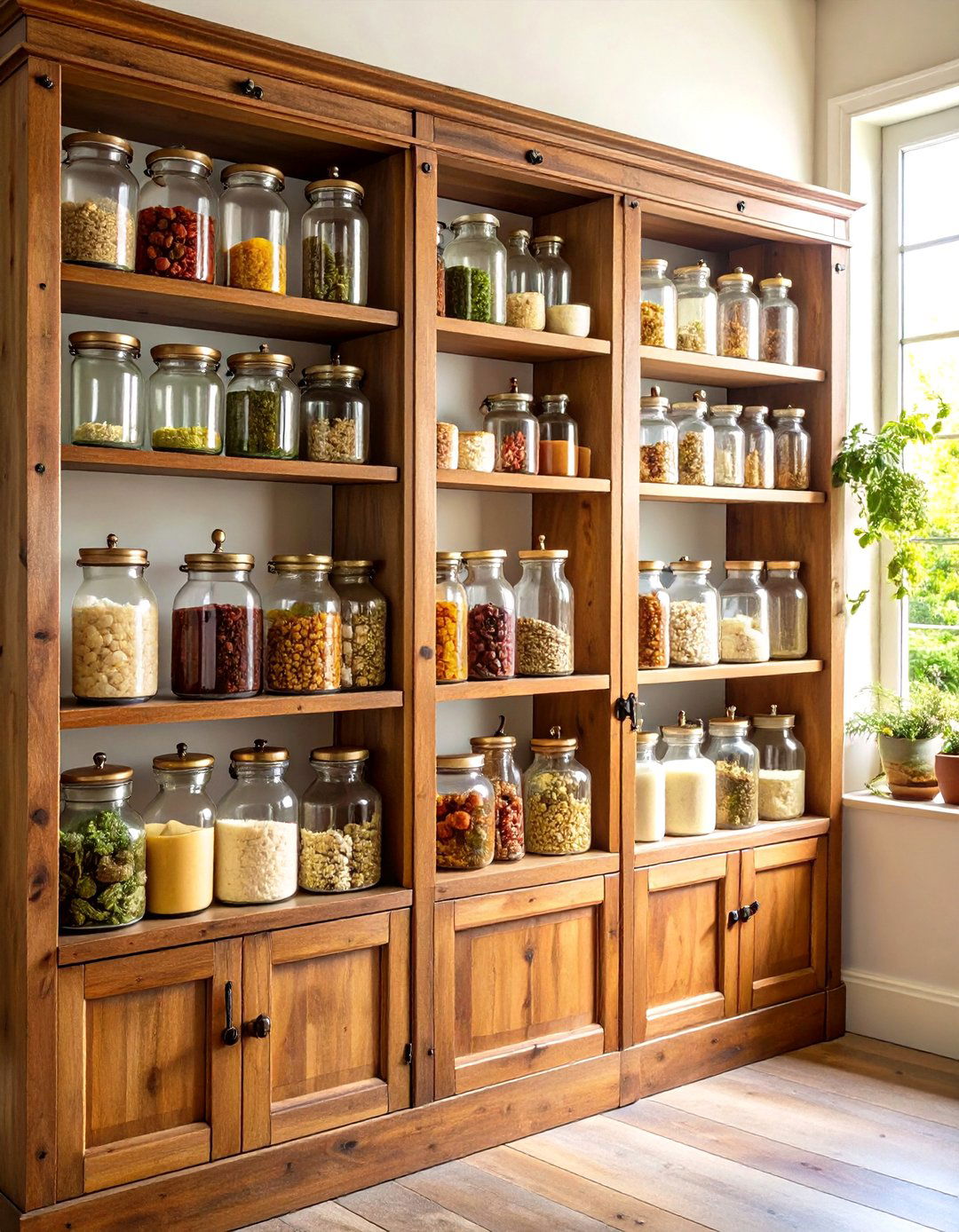

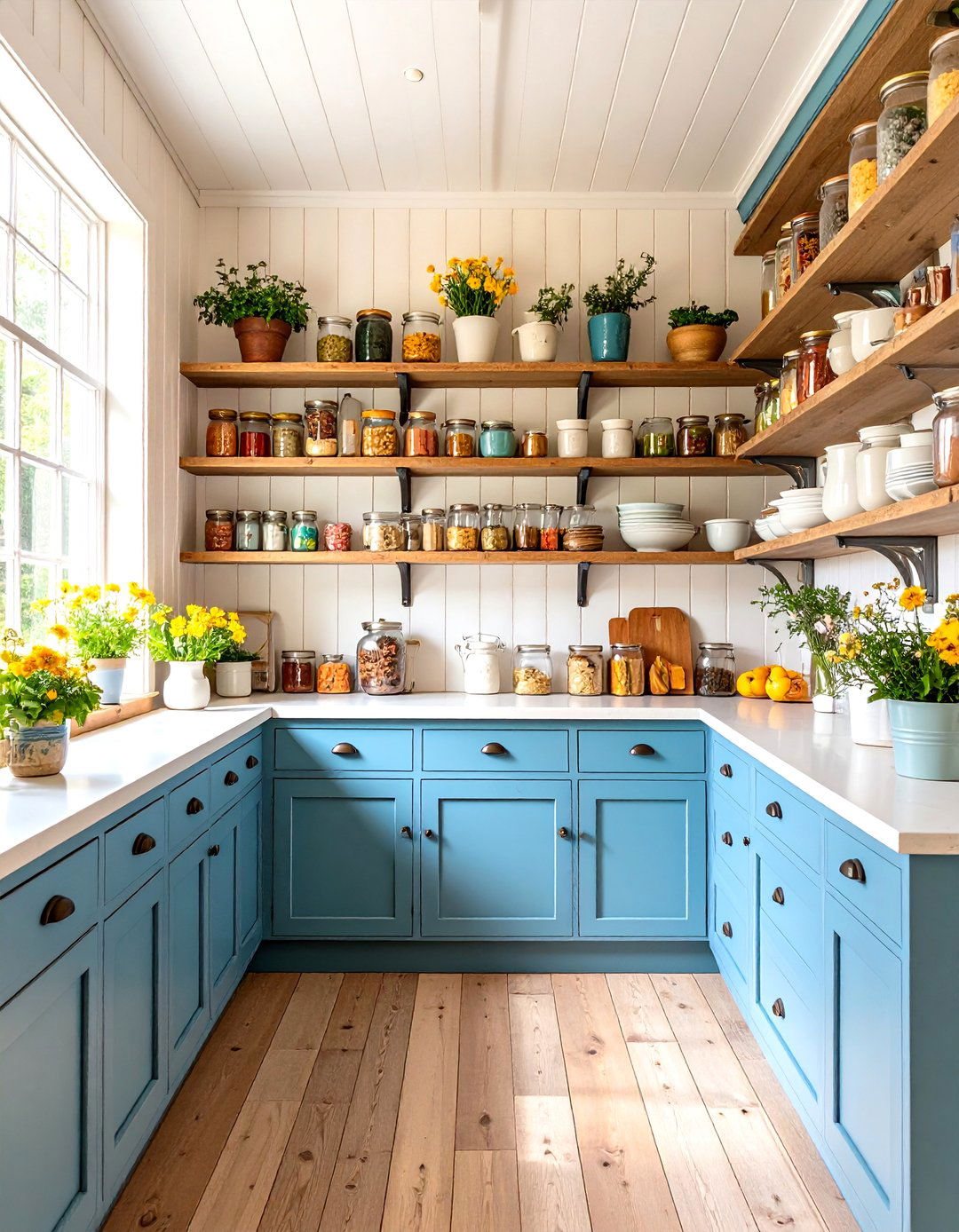
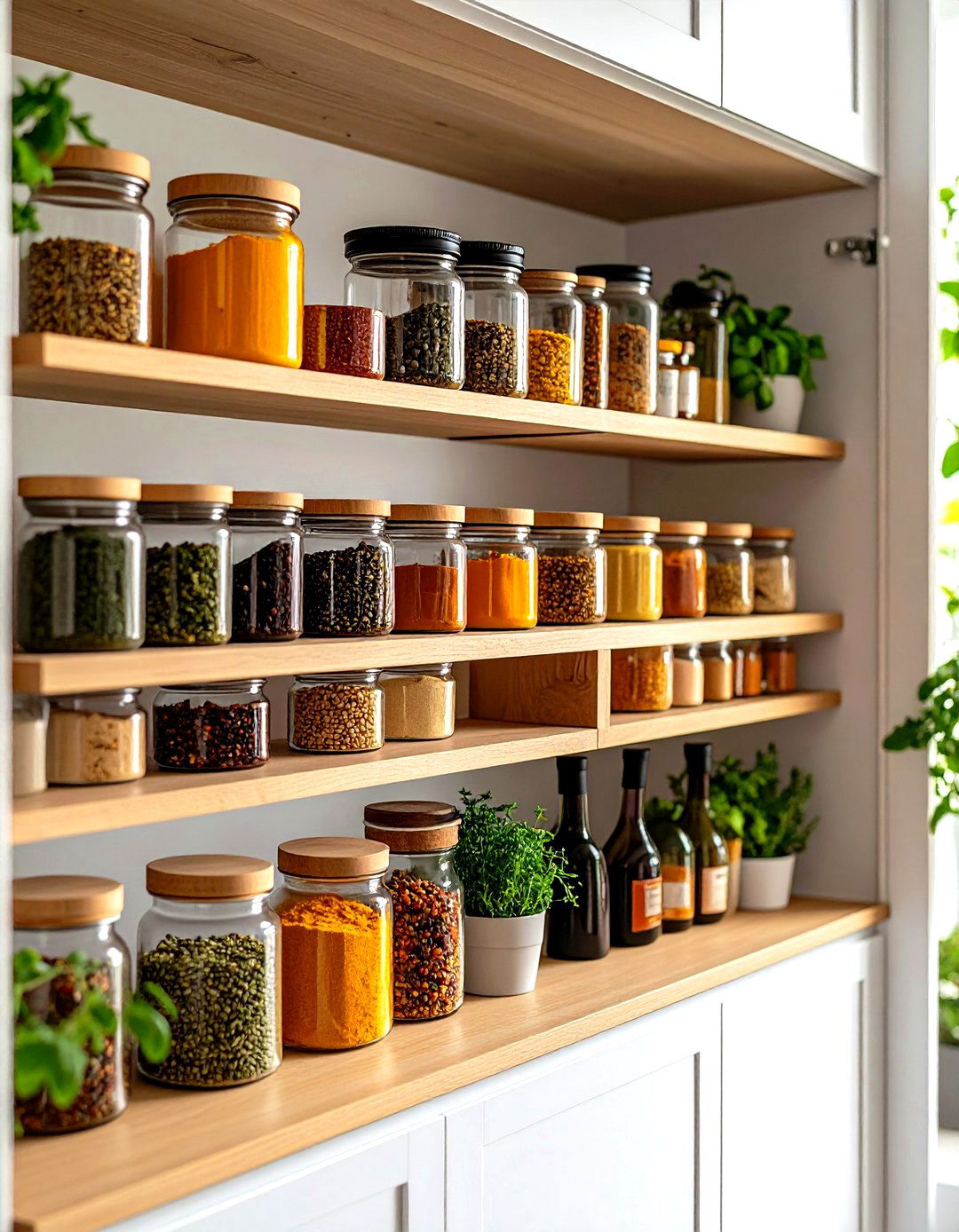
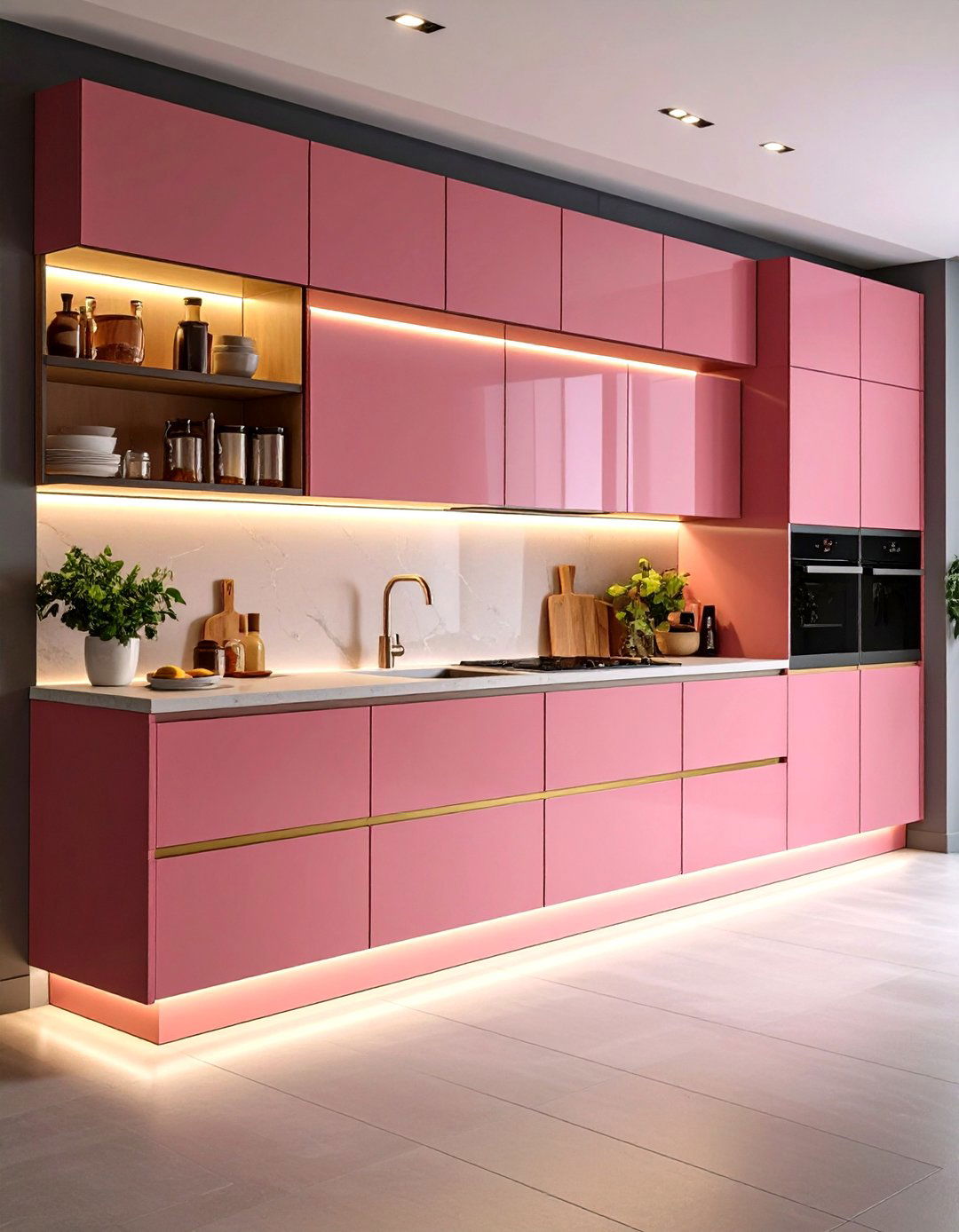
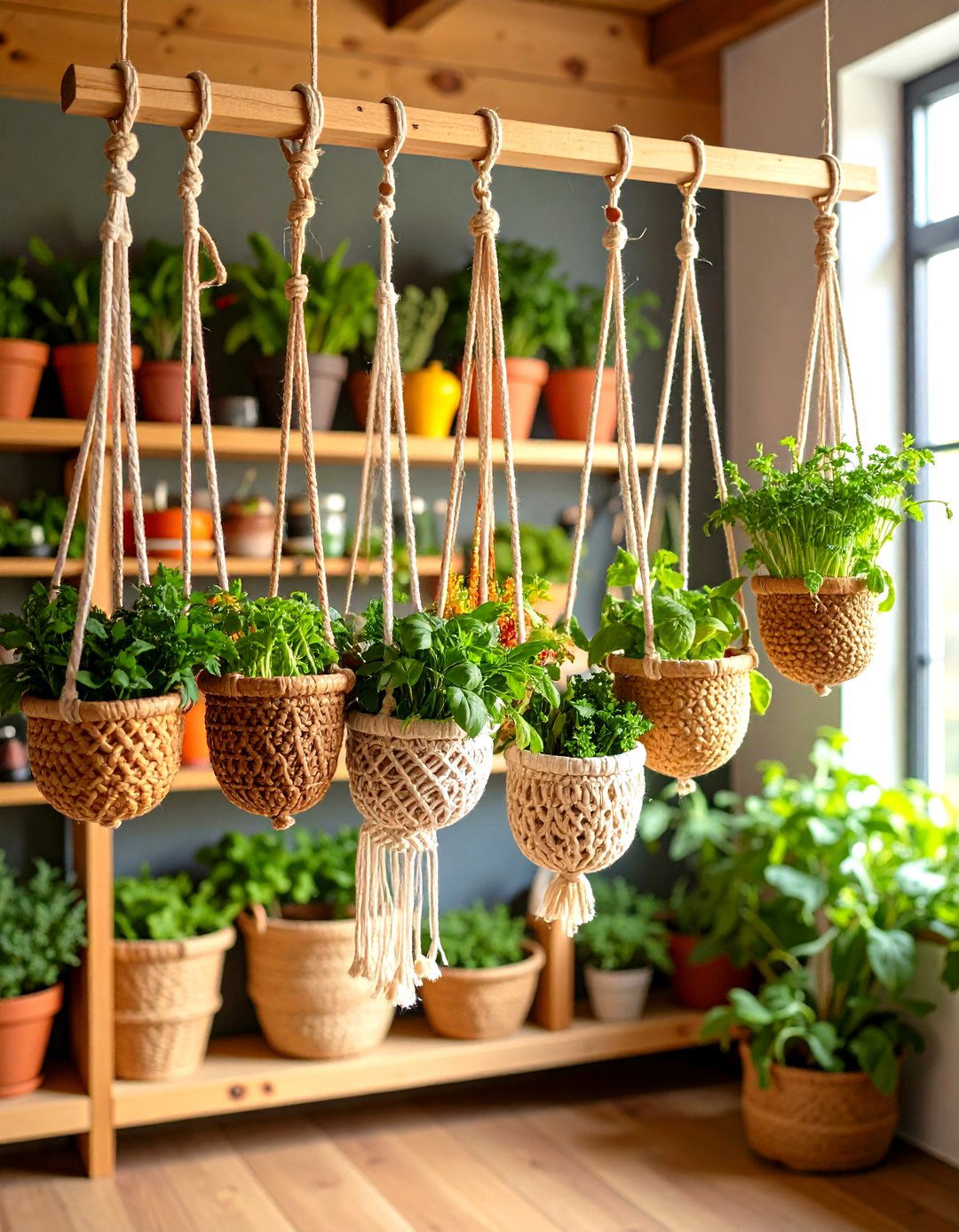
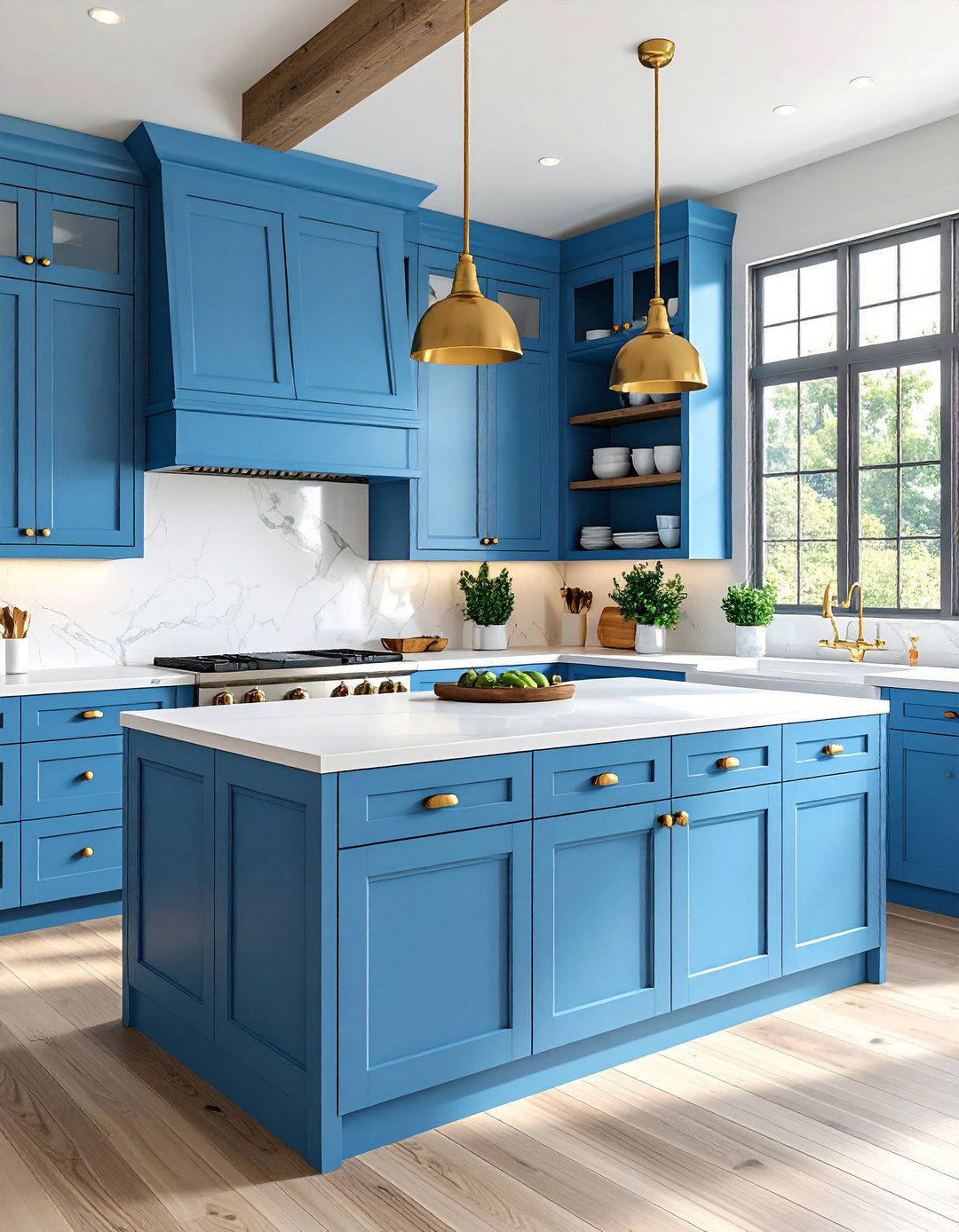
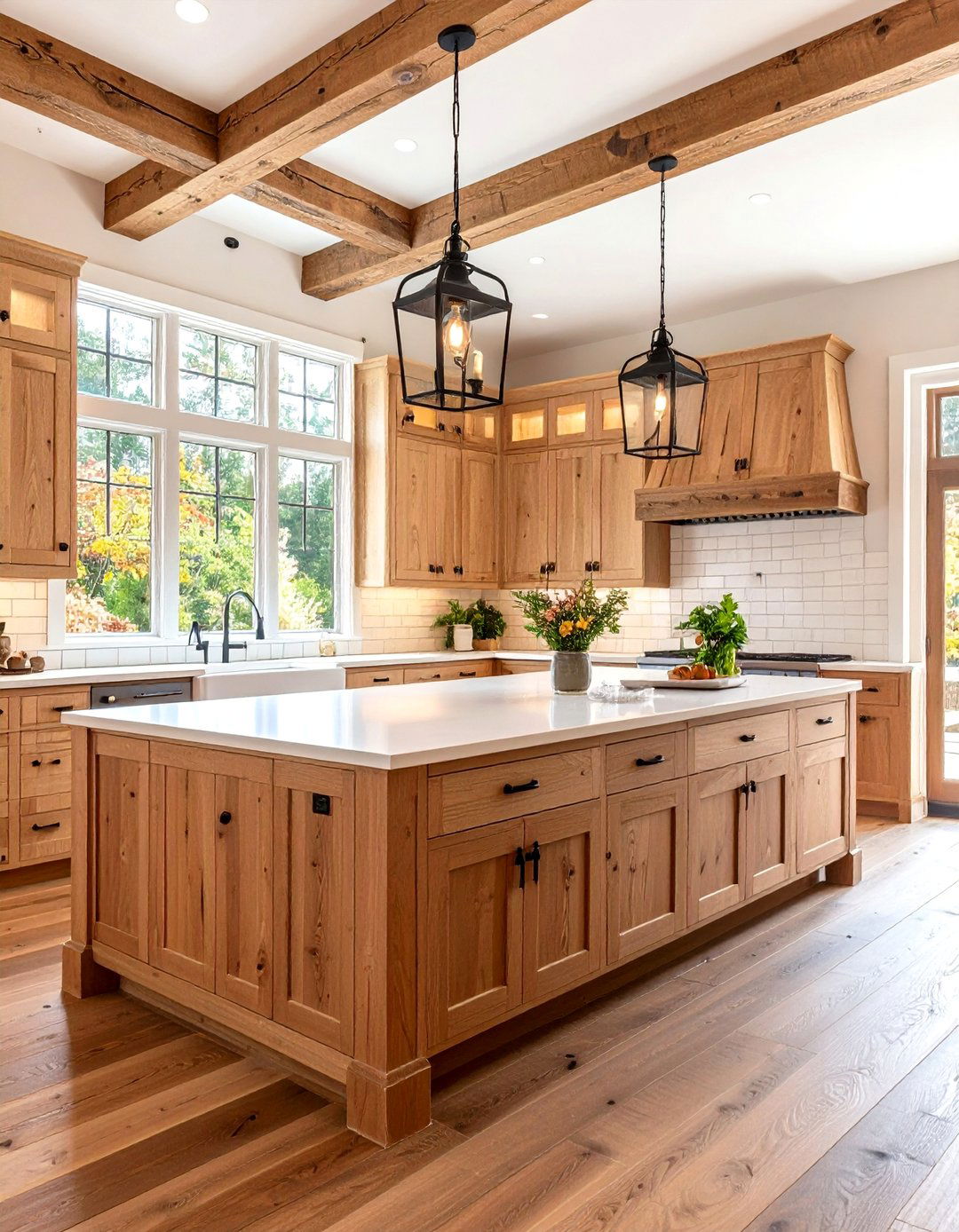
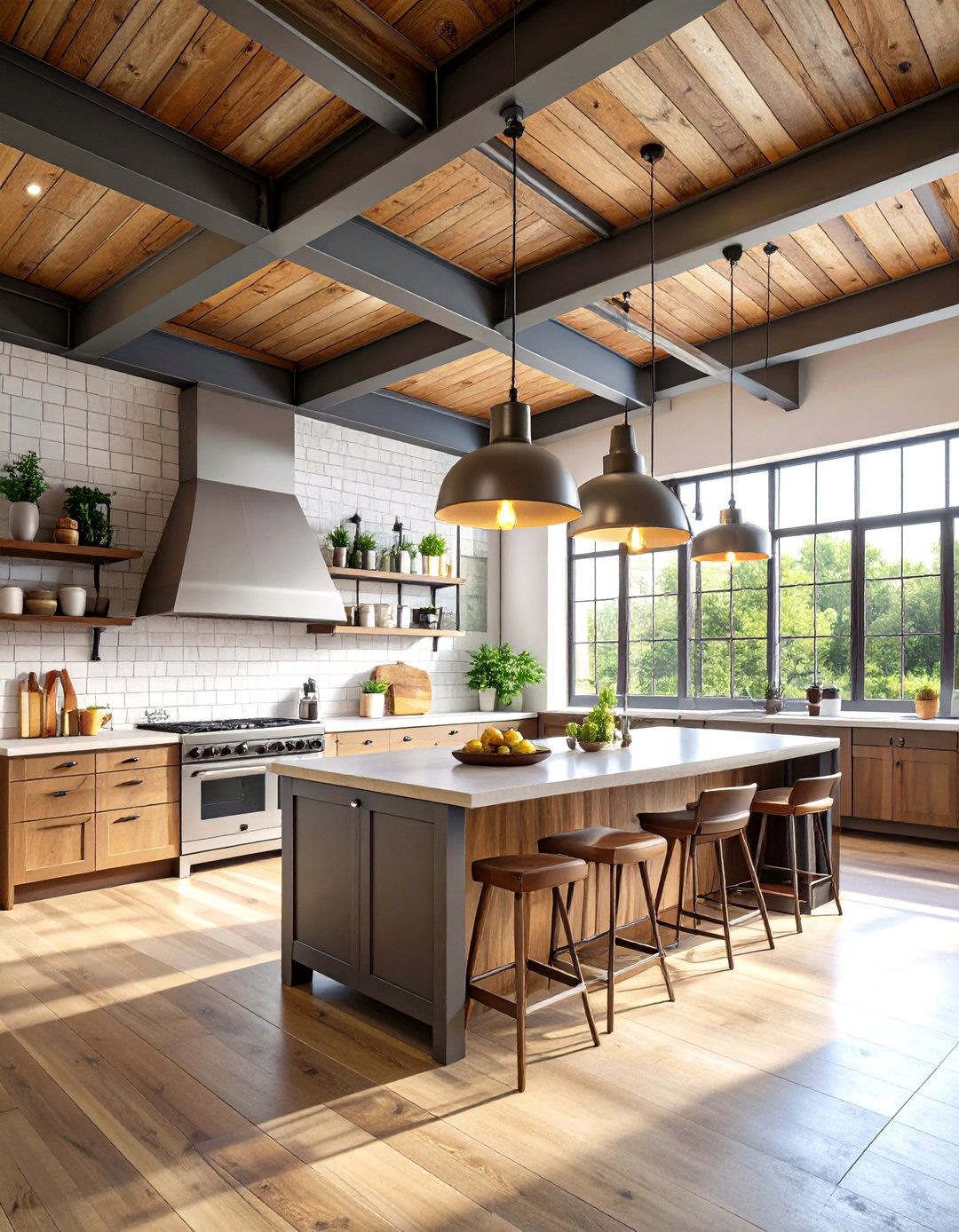
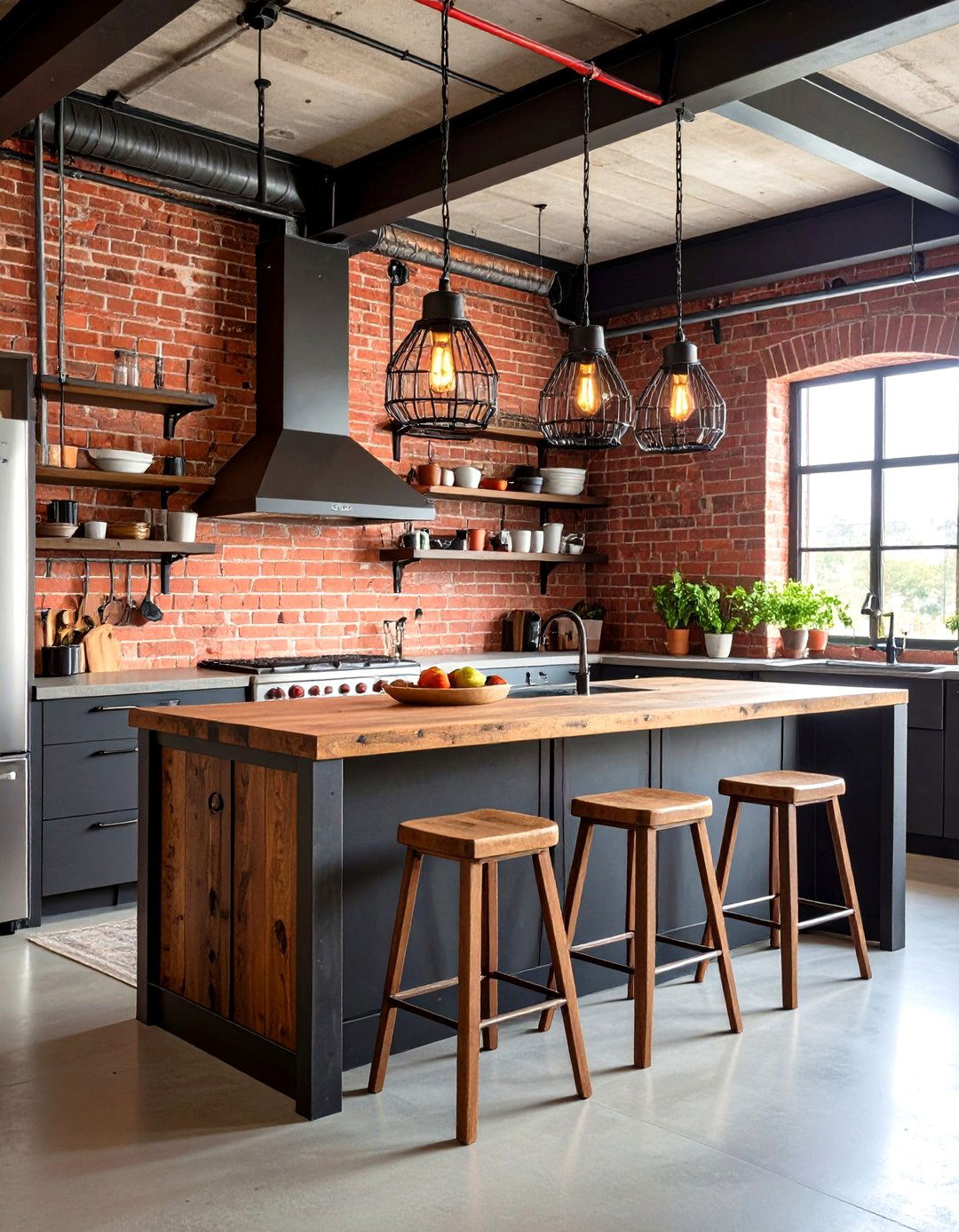
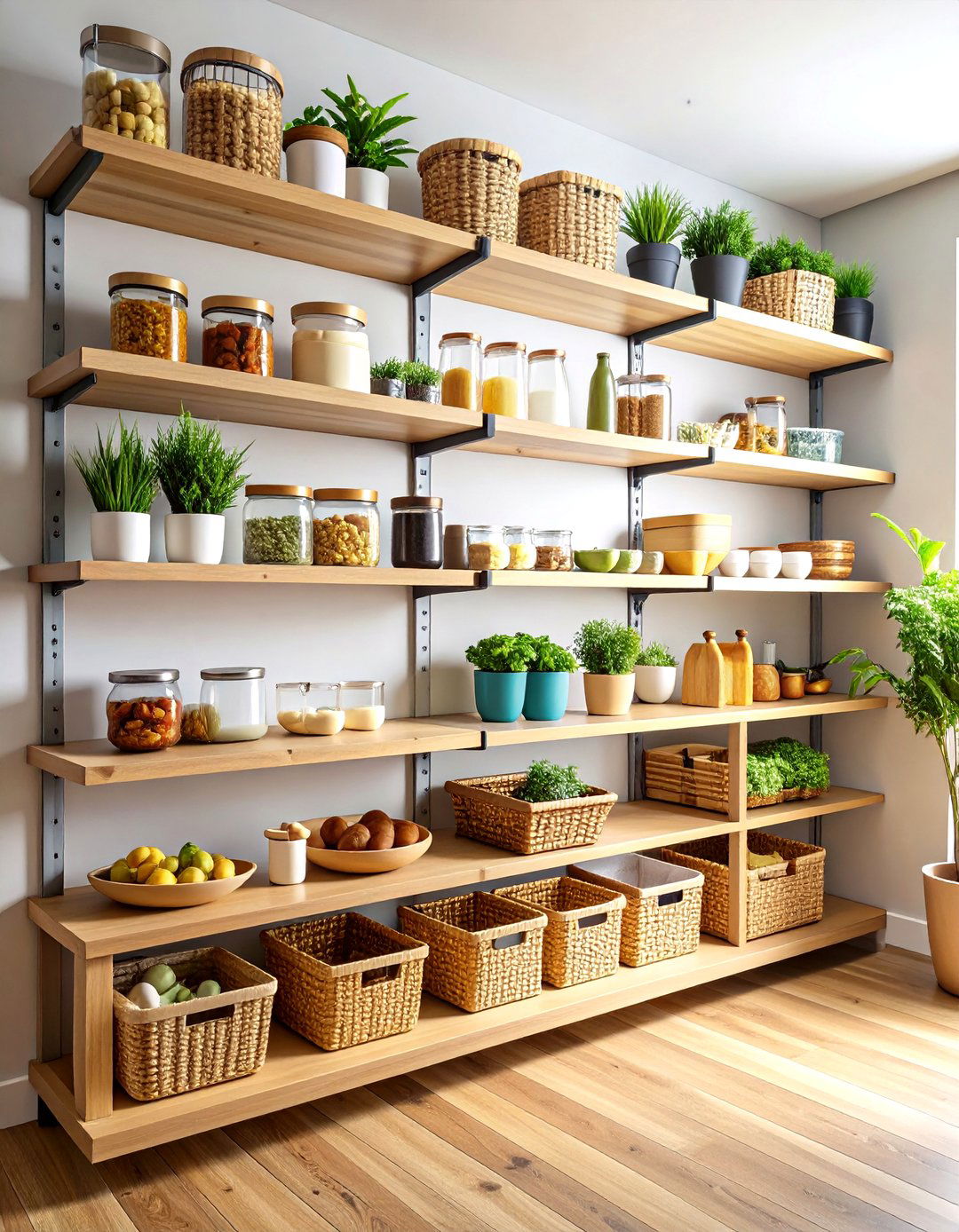
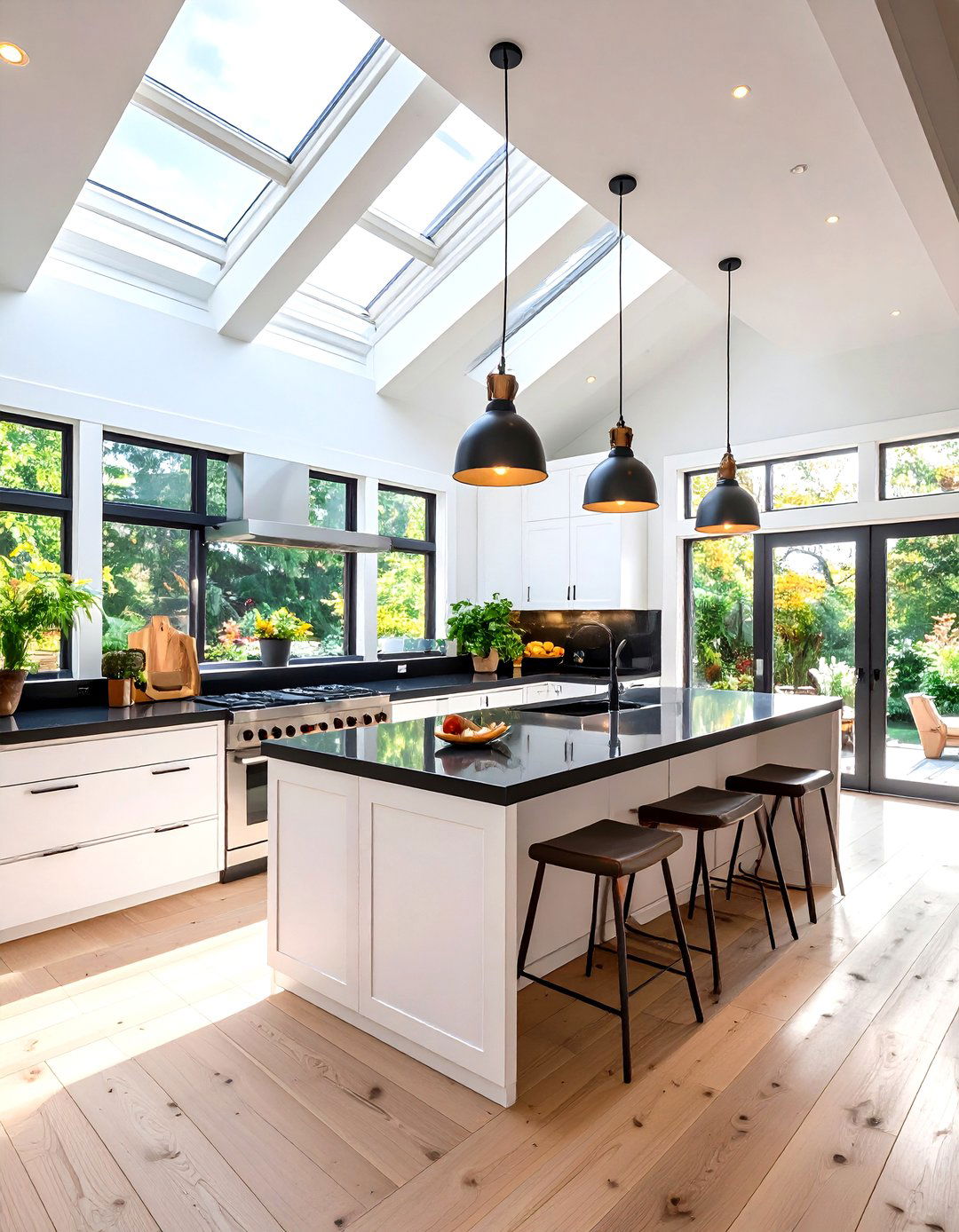
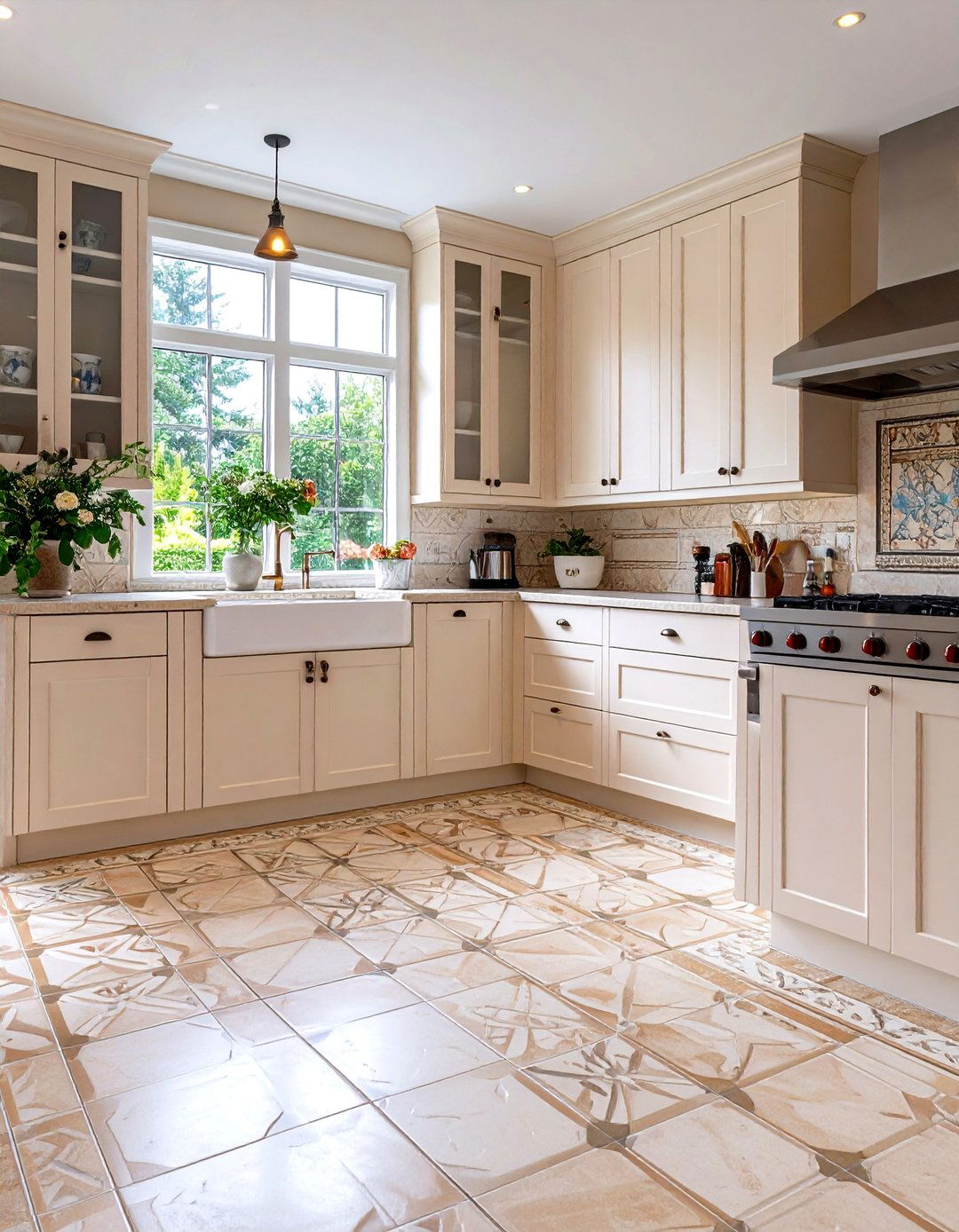
Leave a Reply